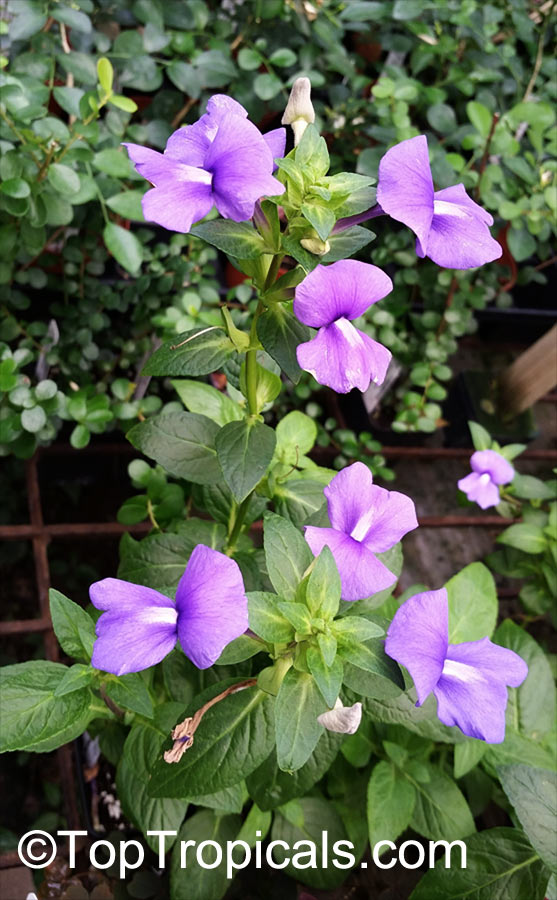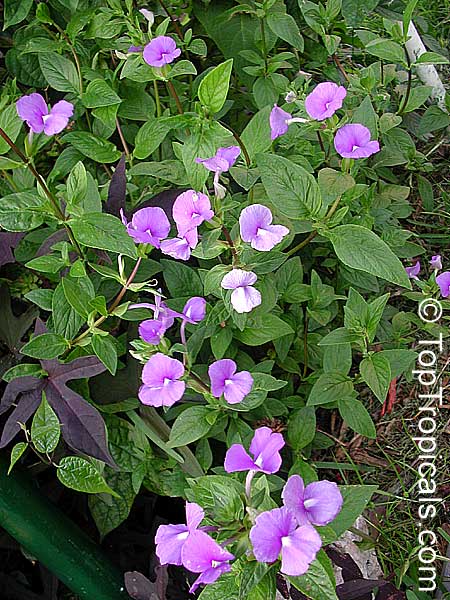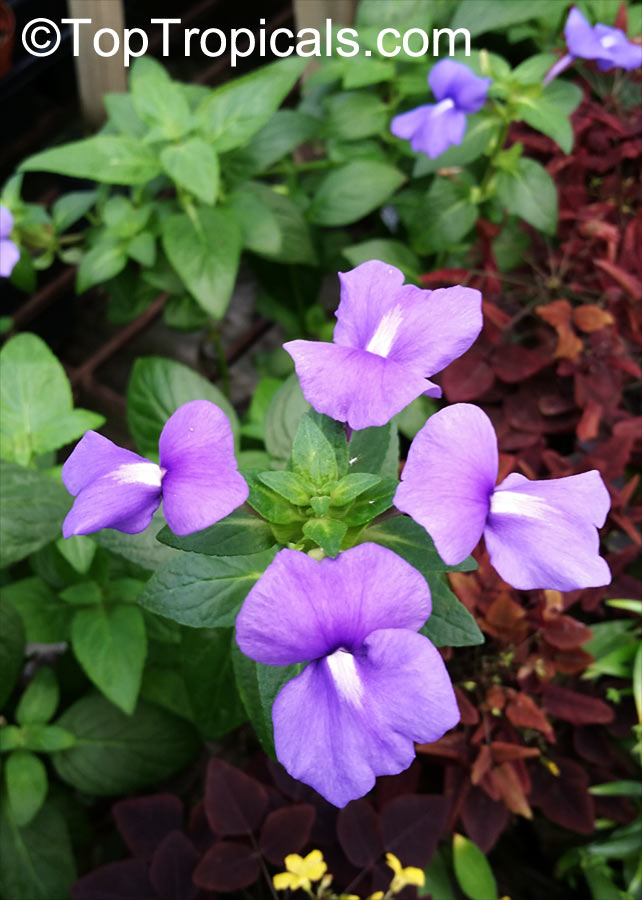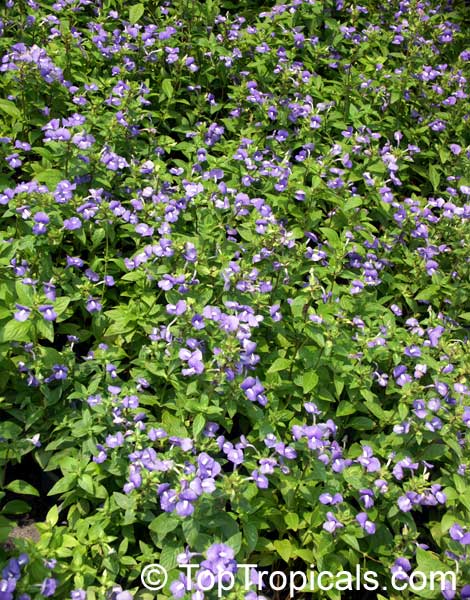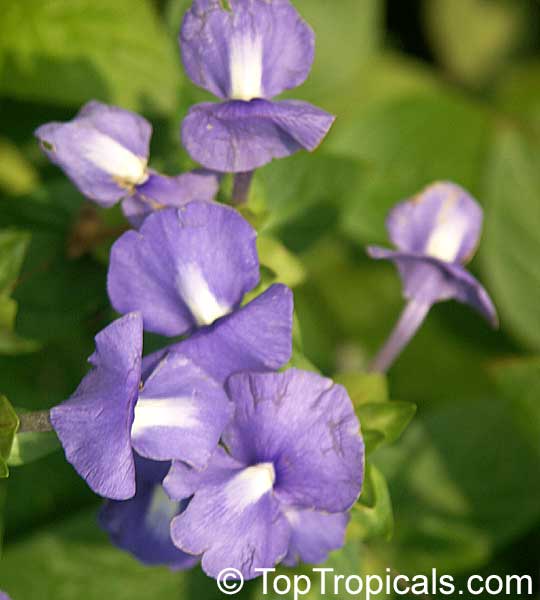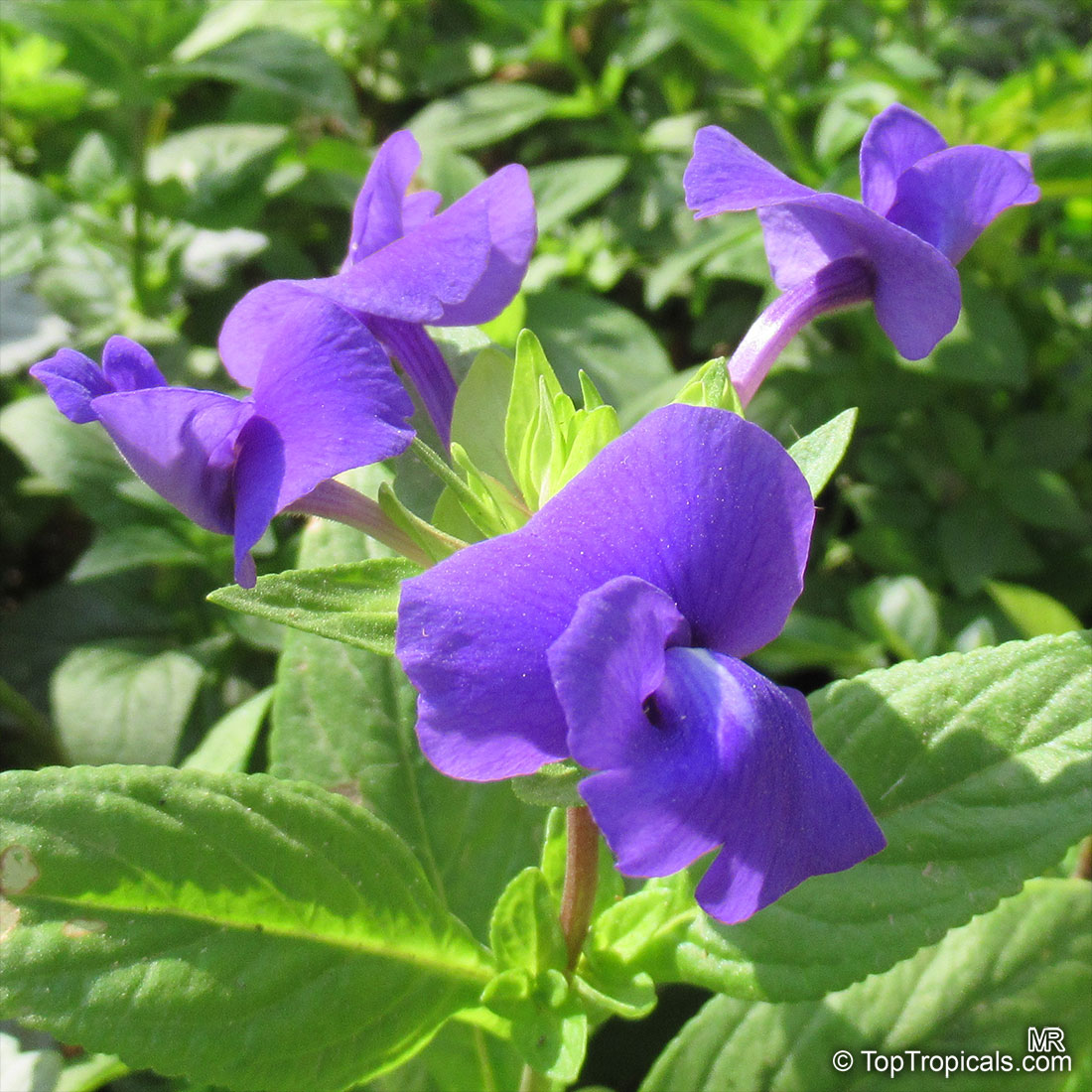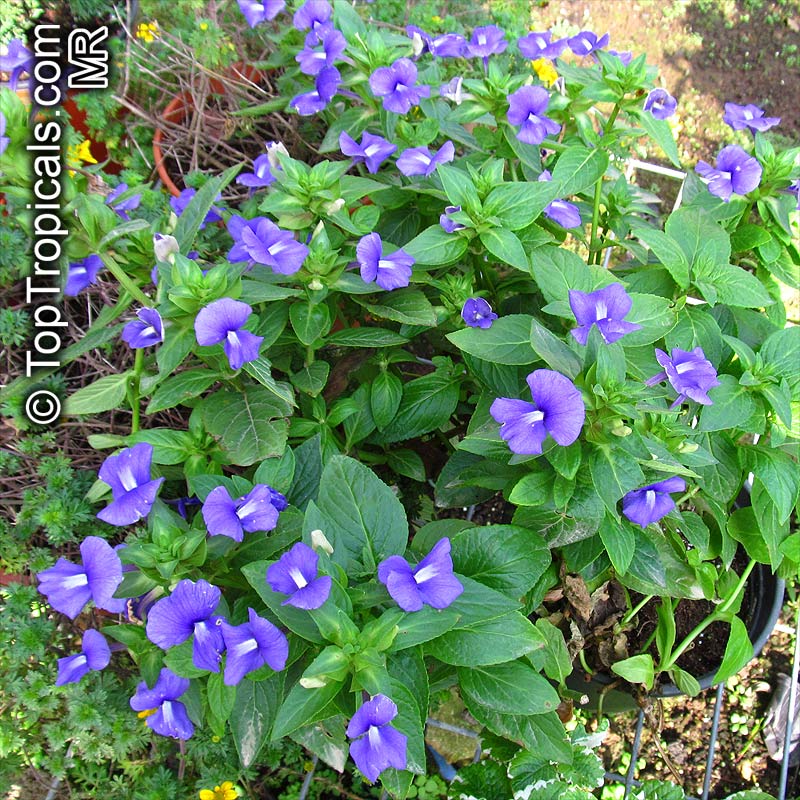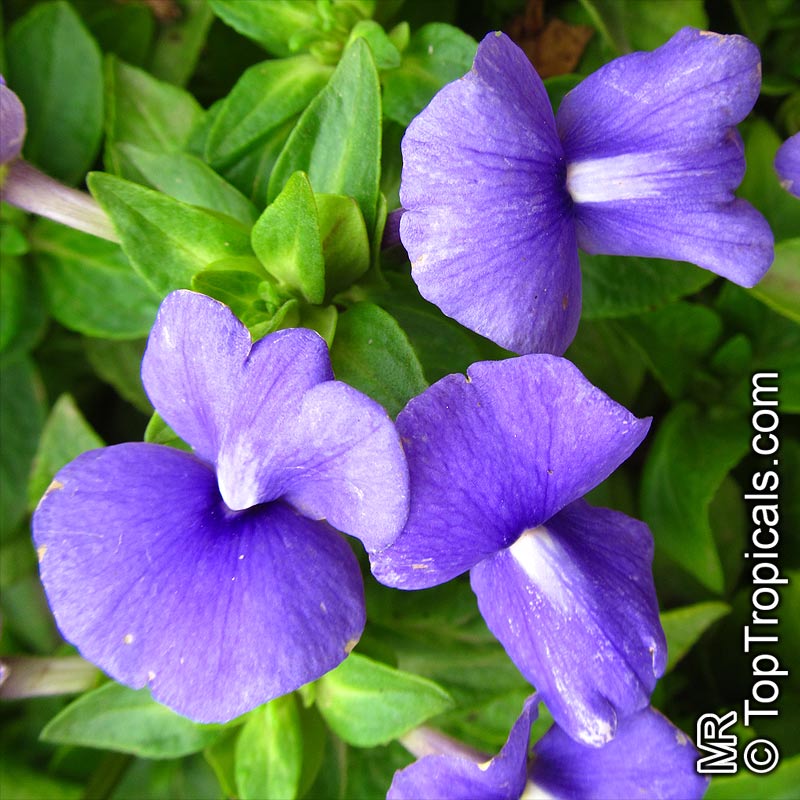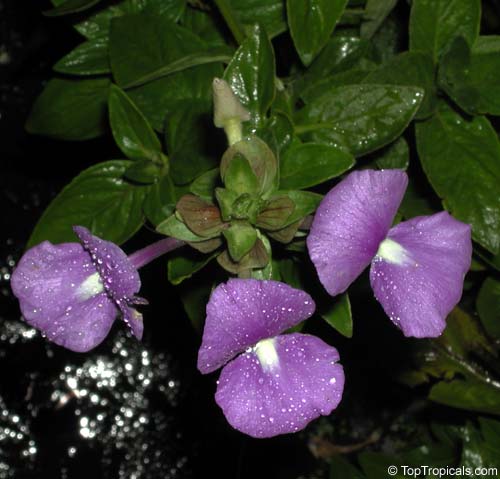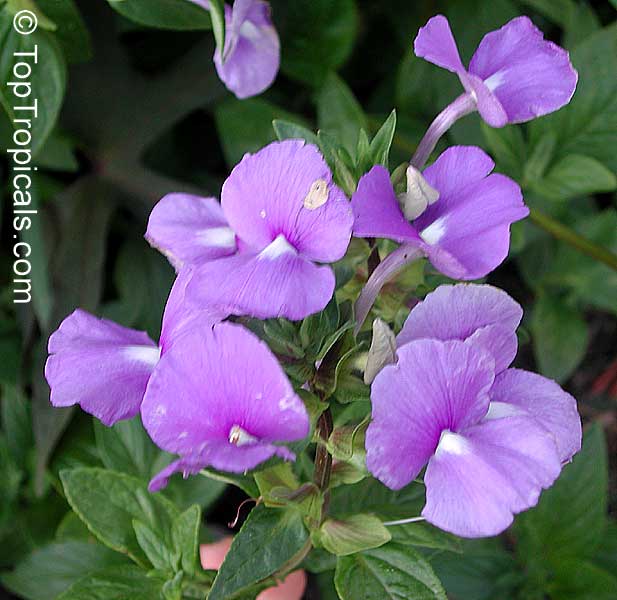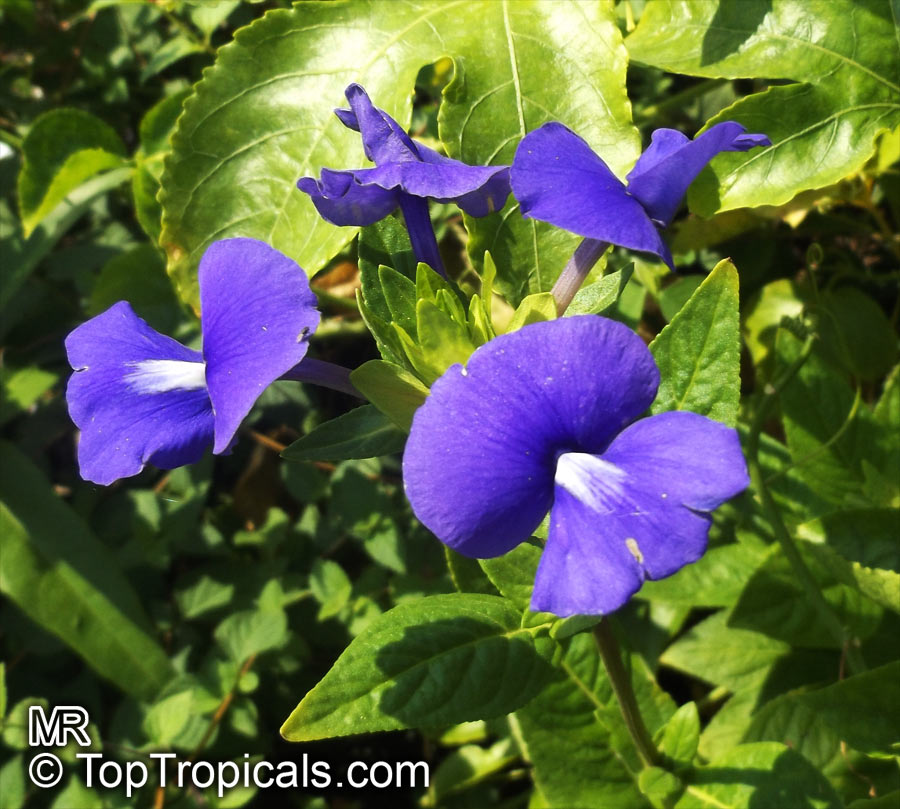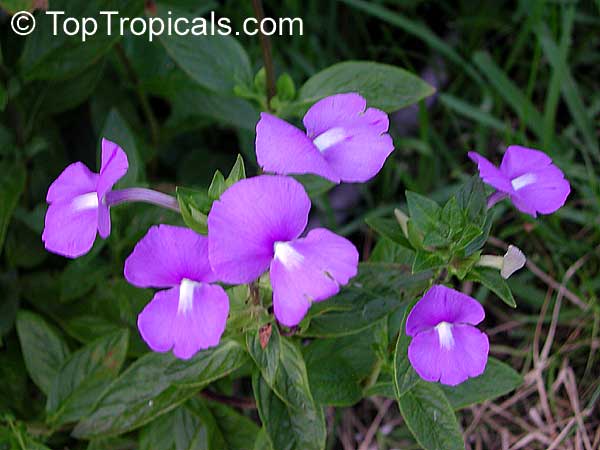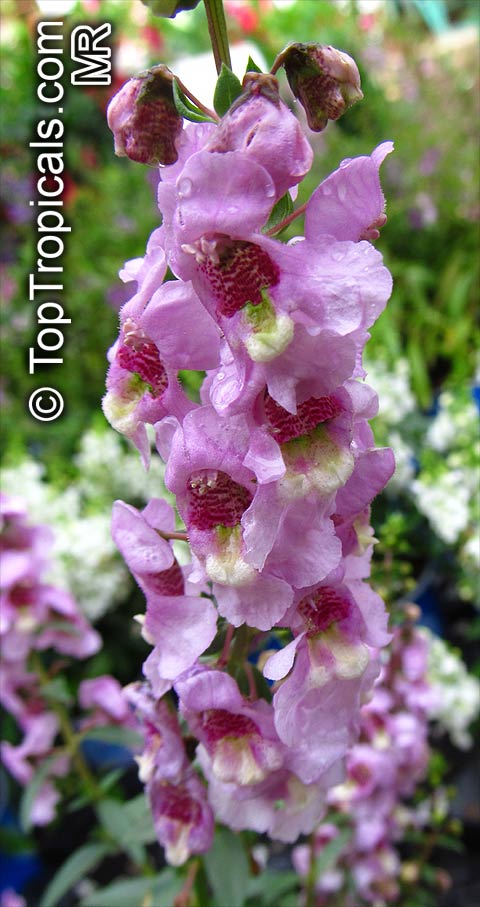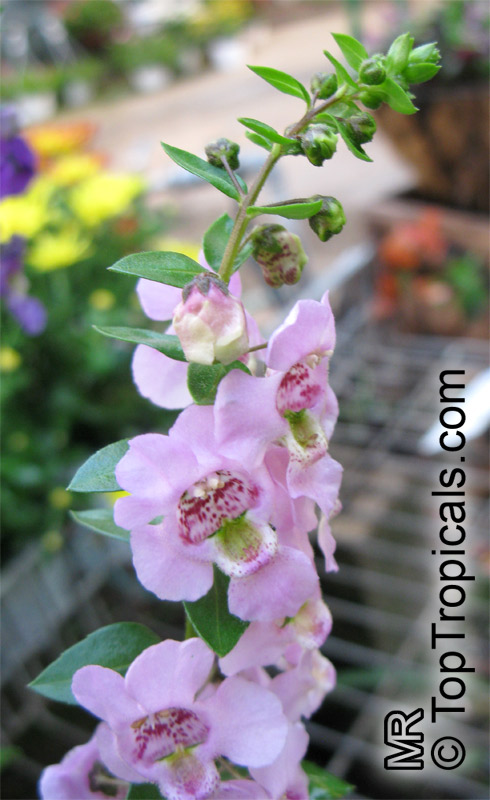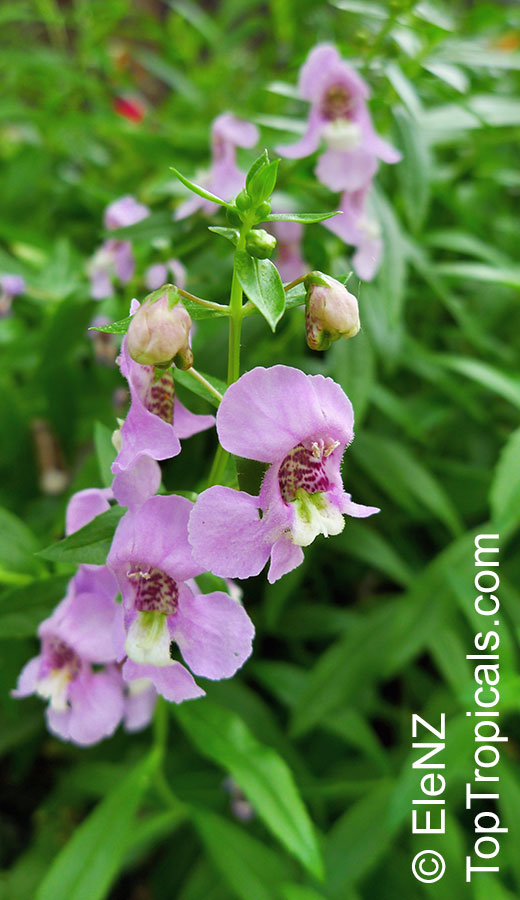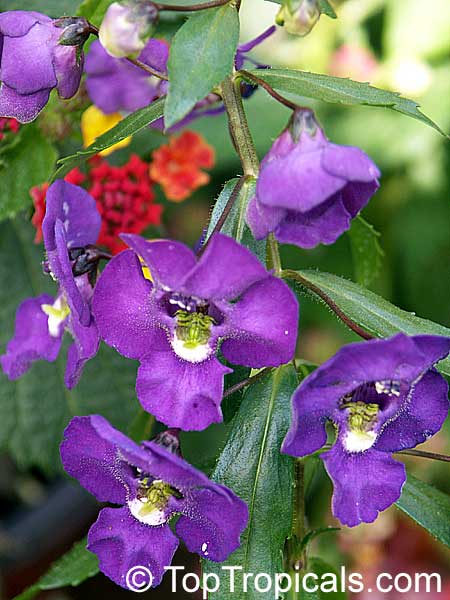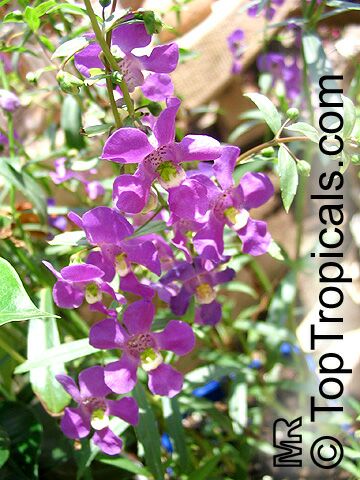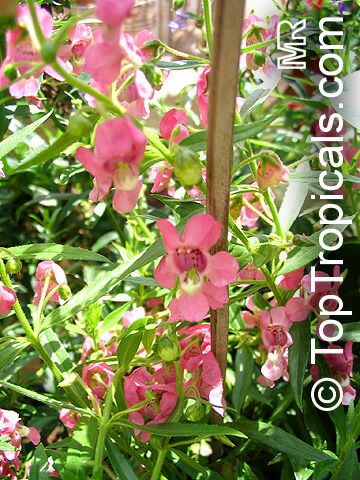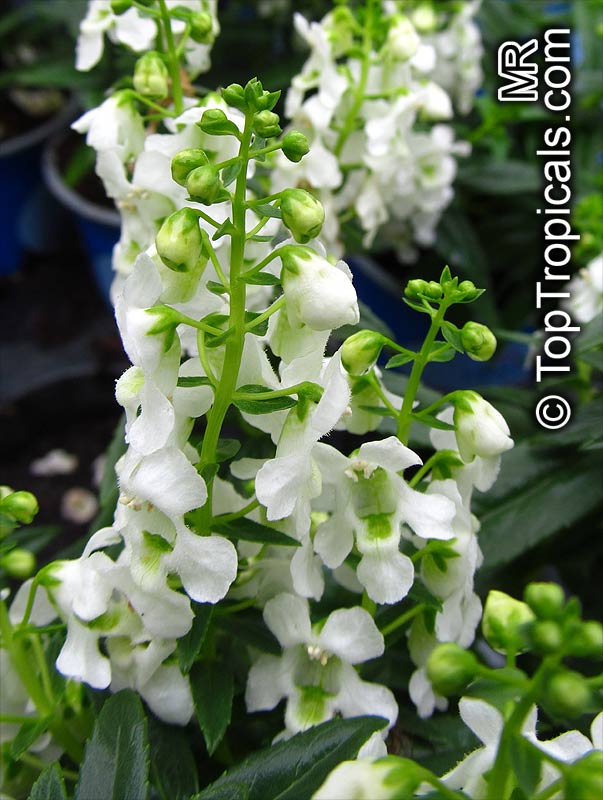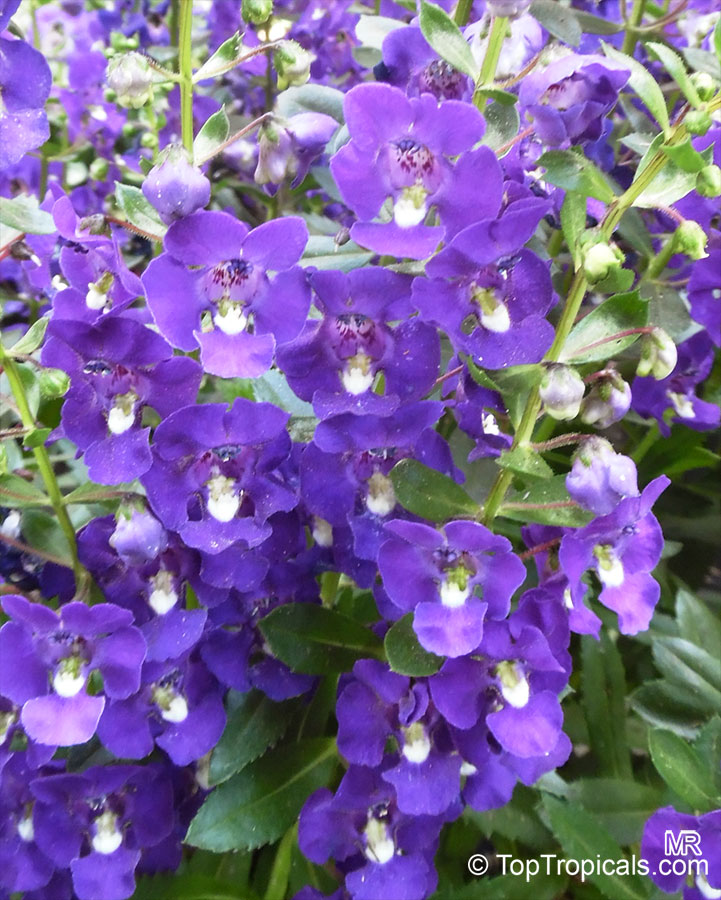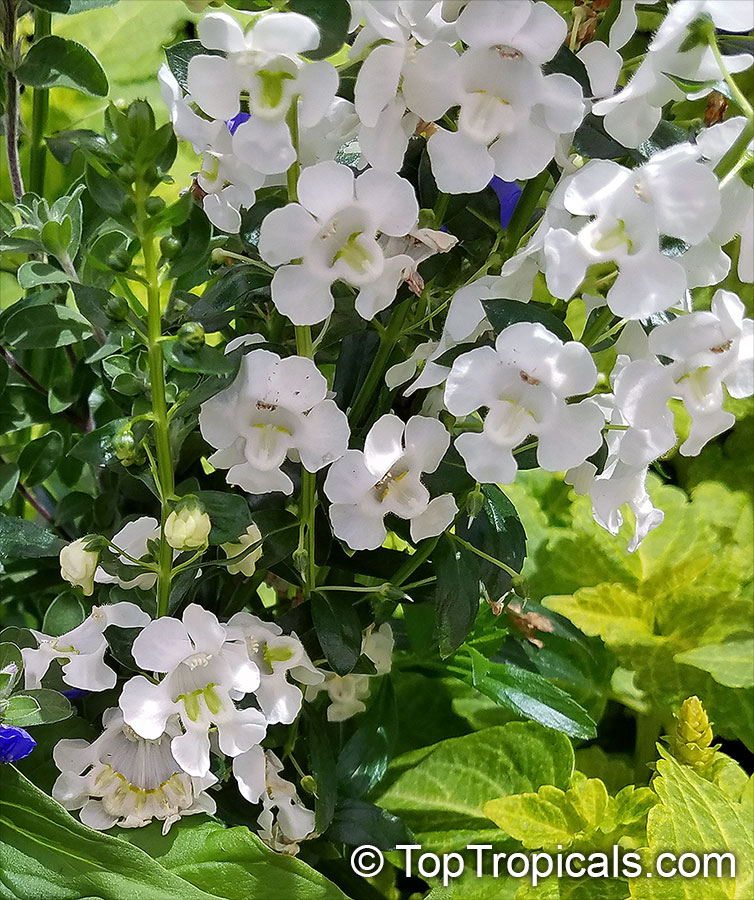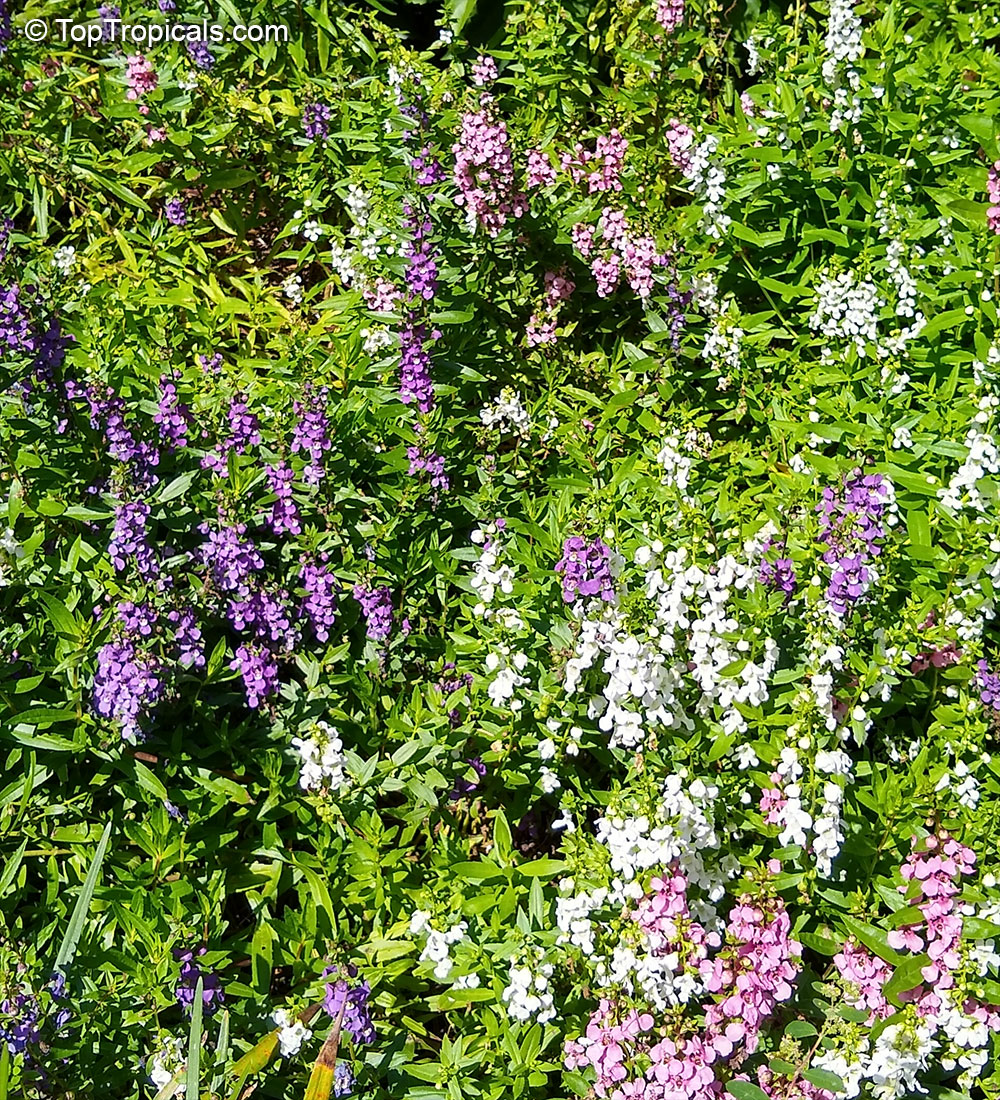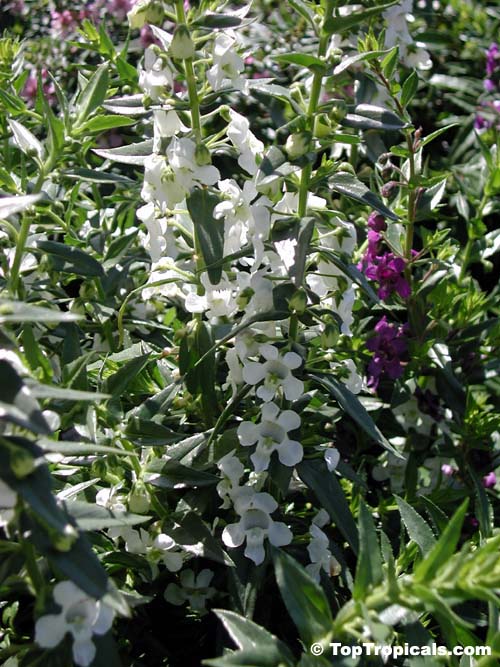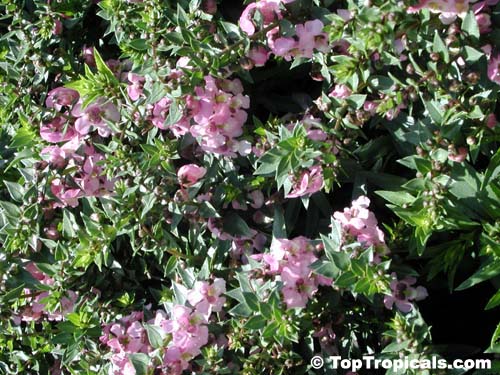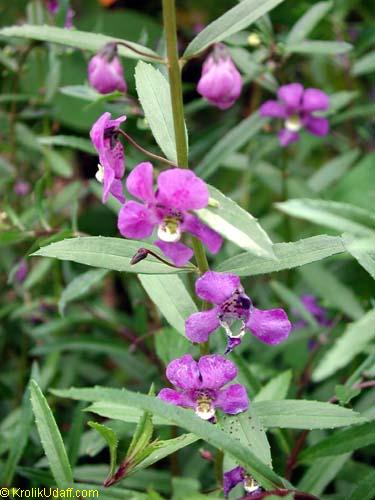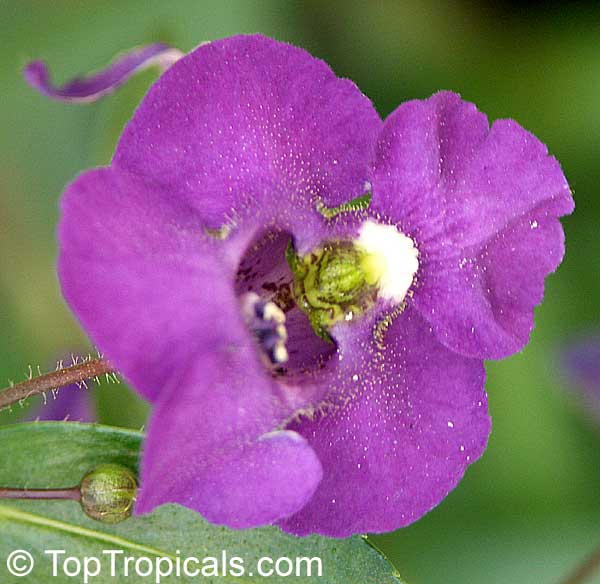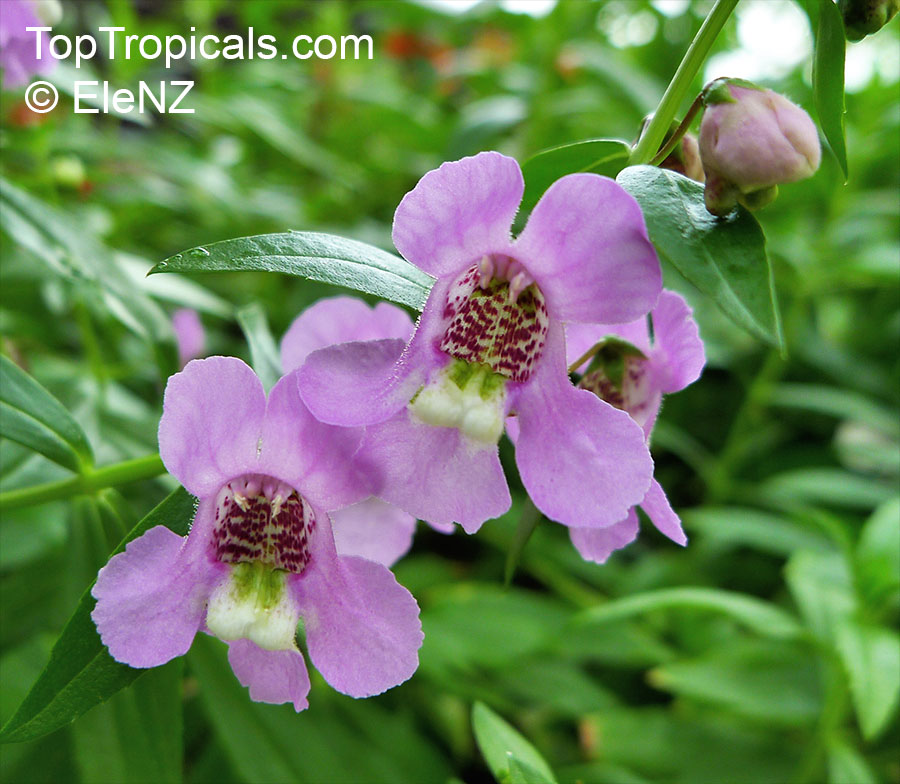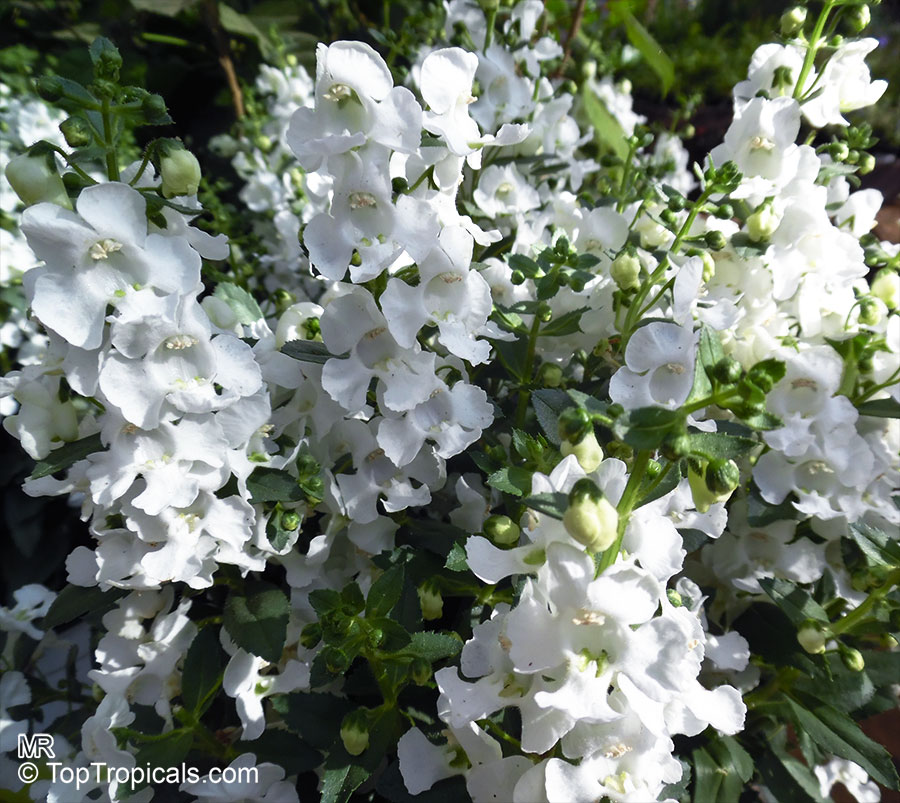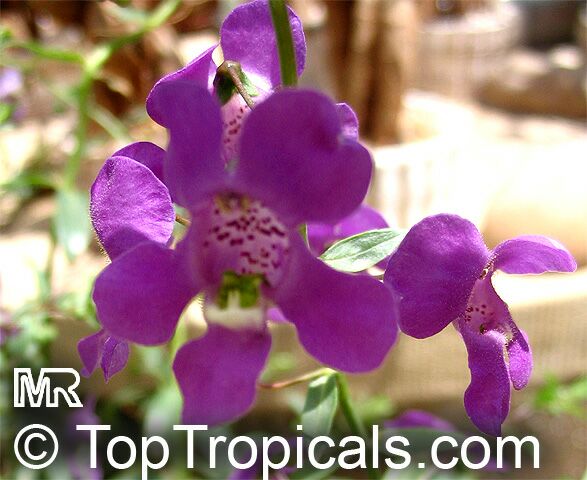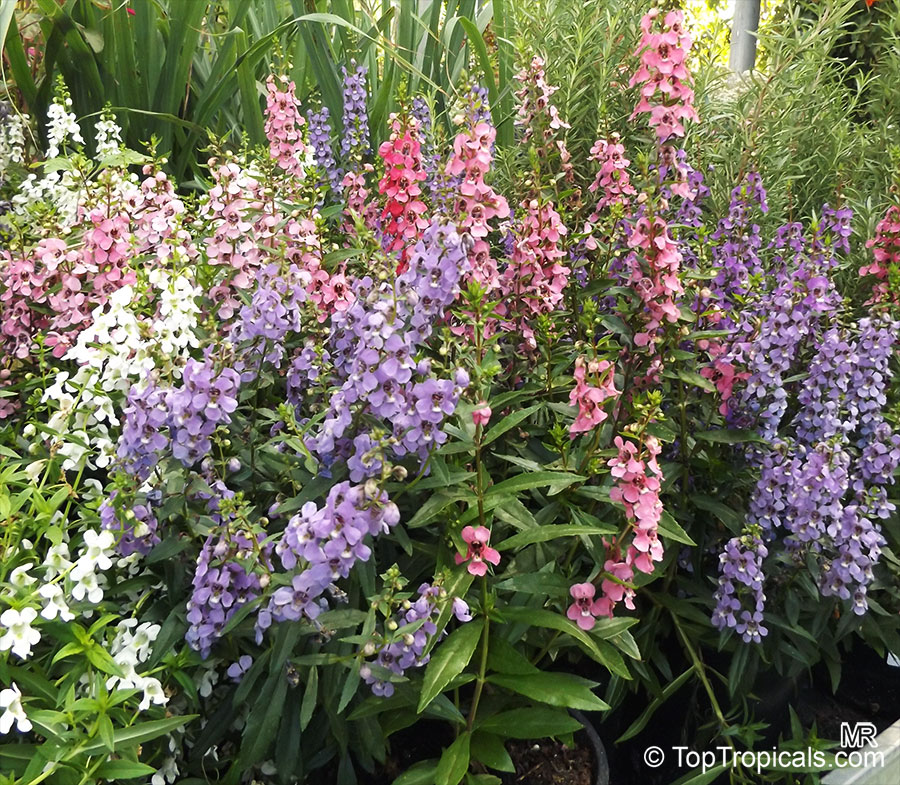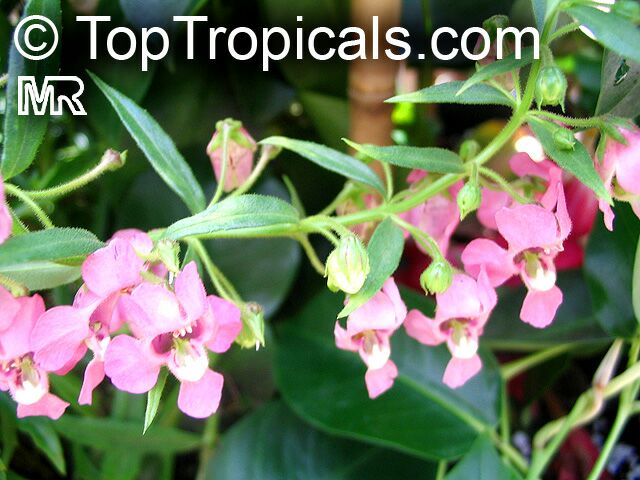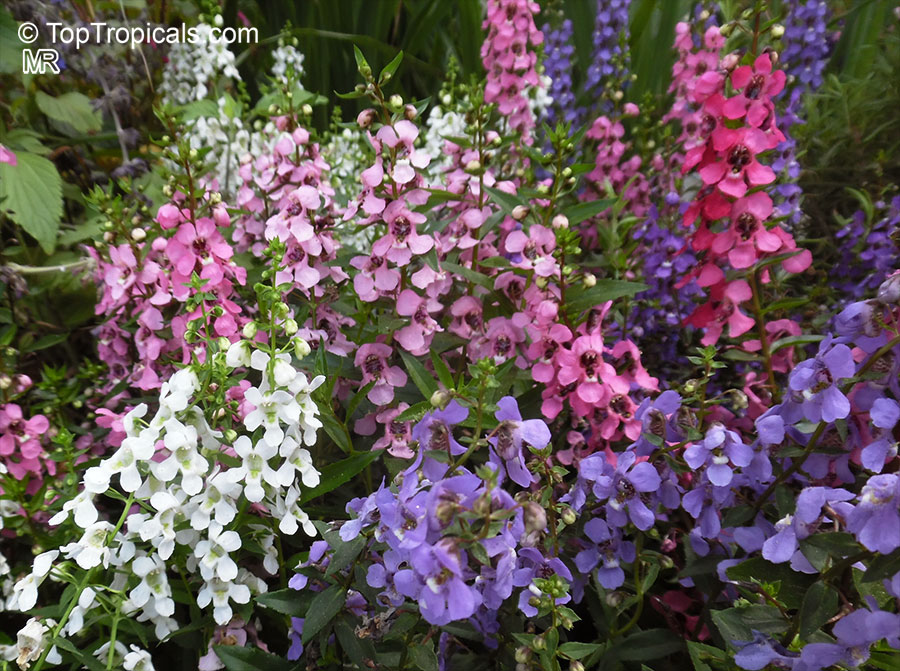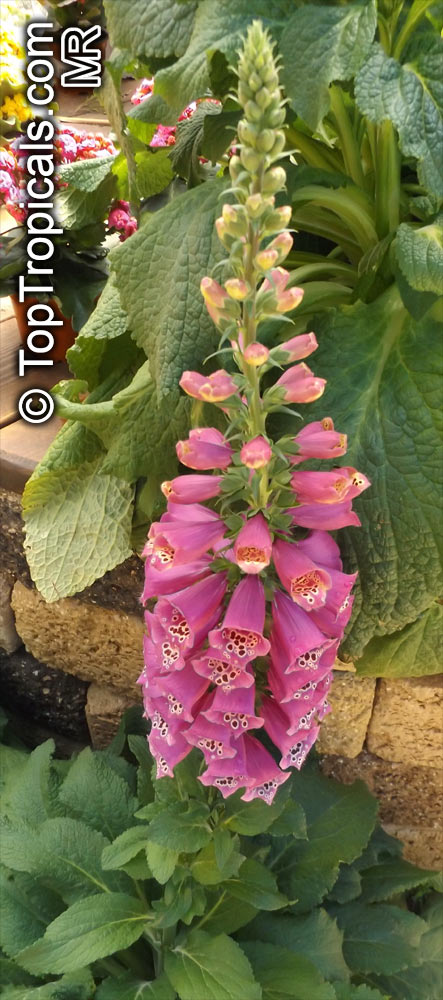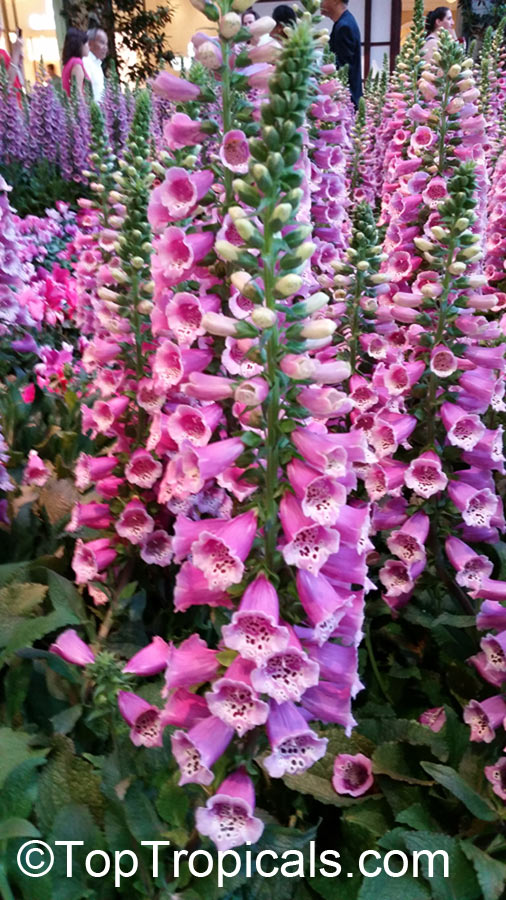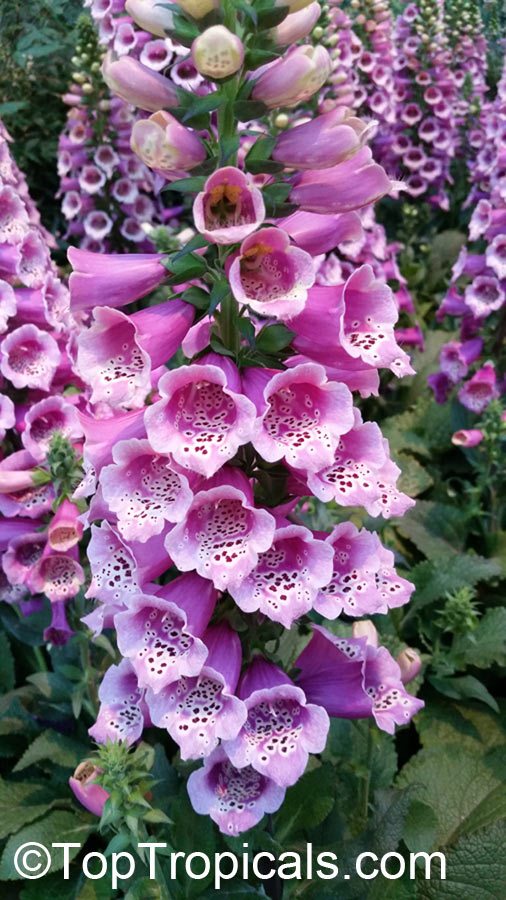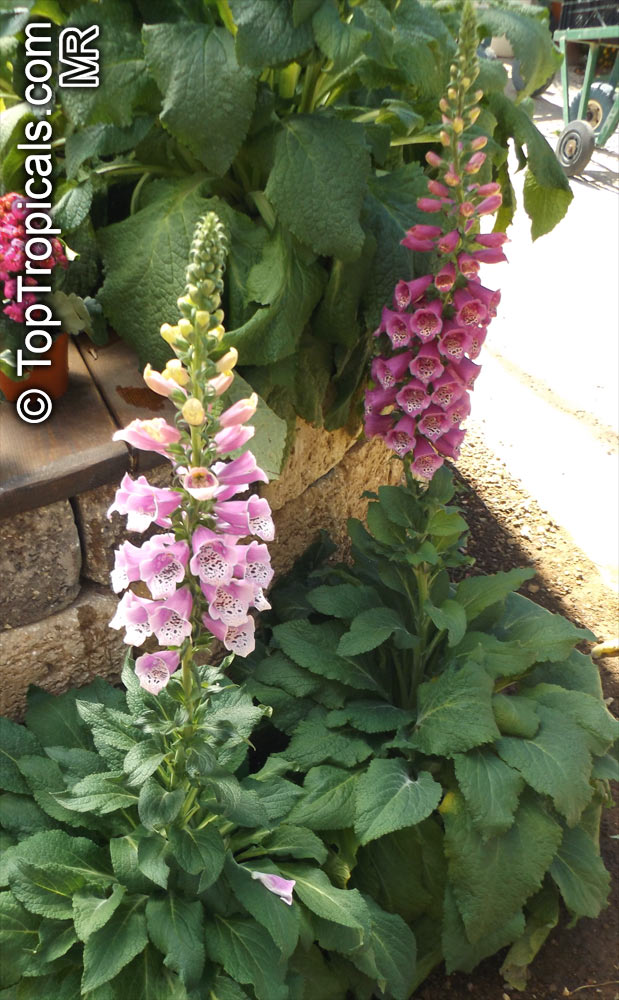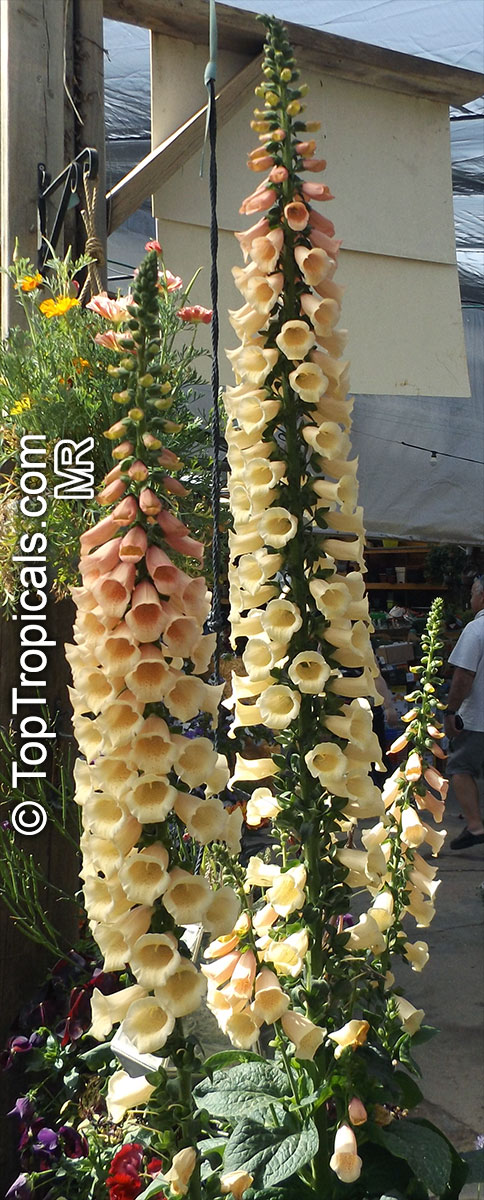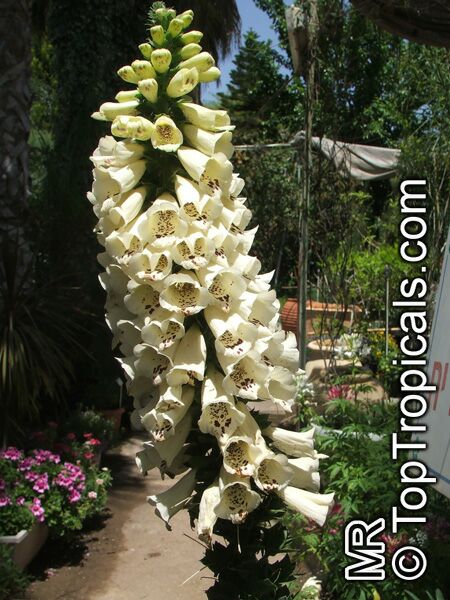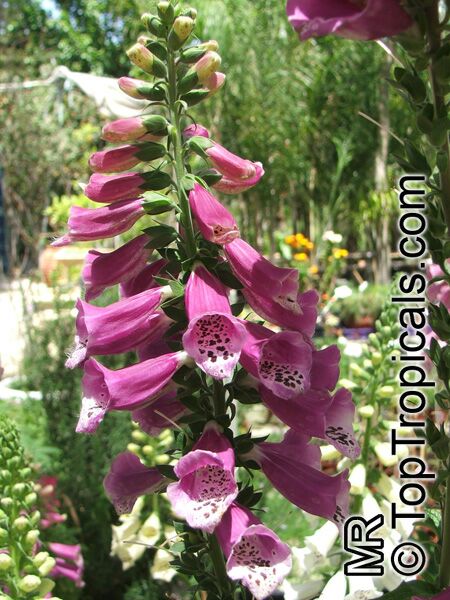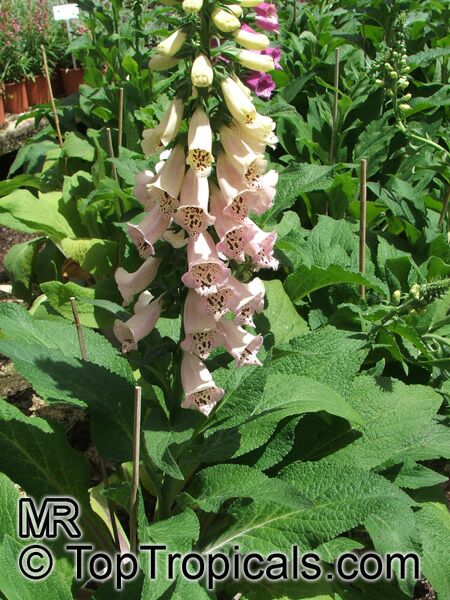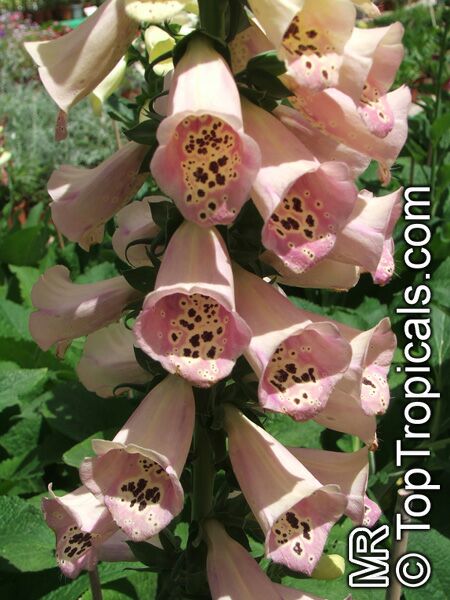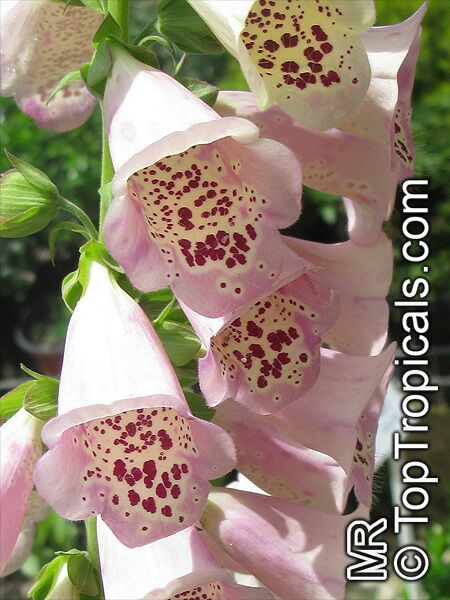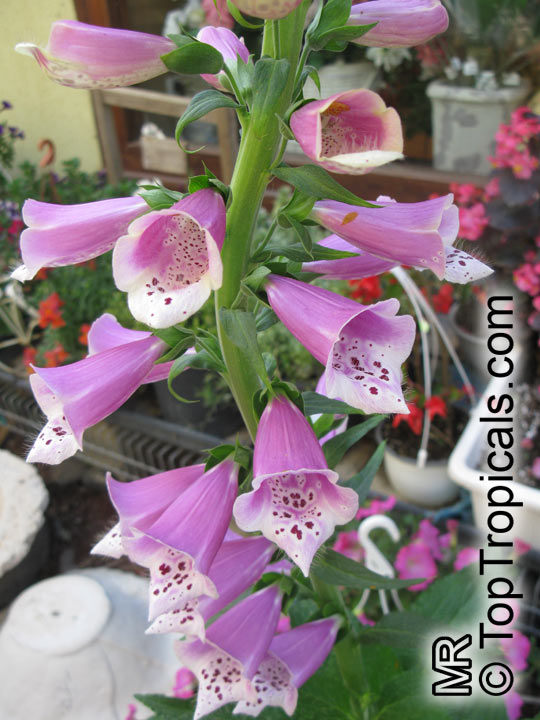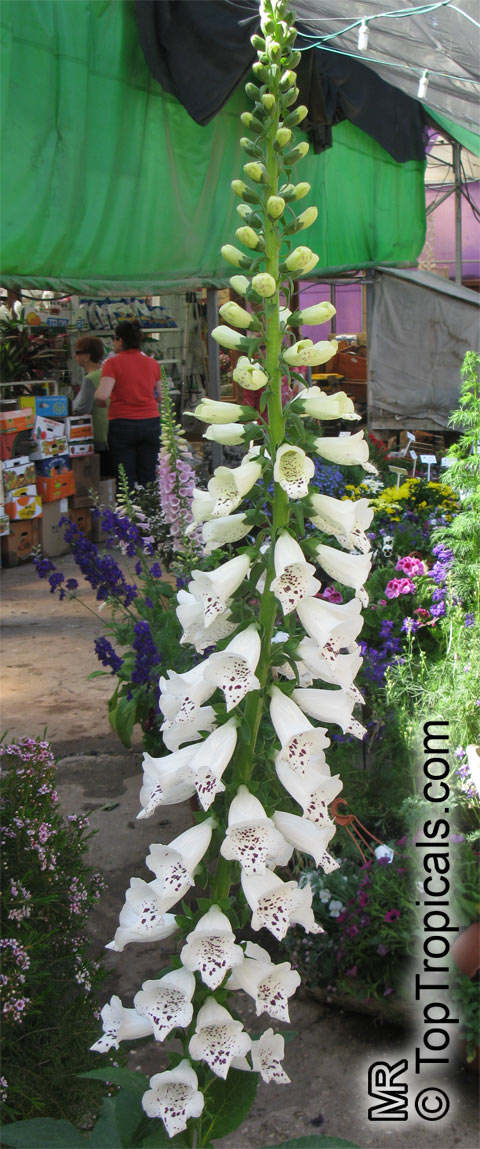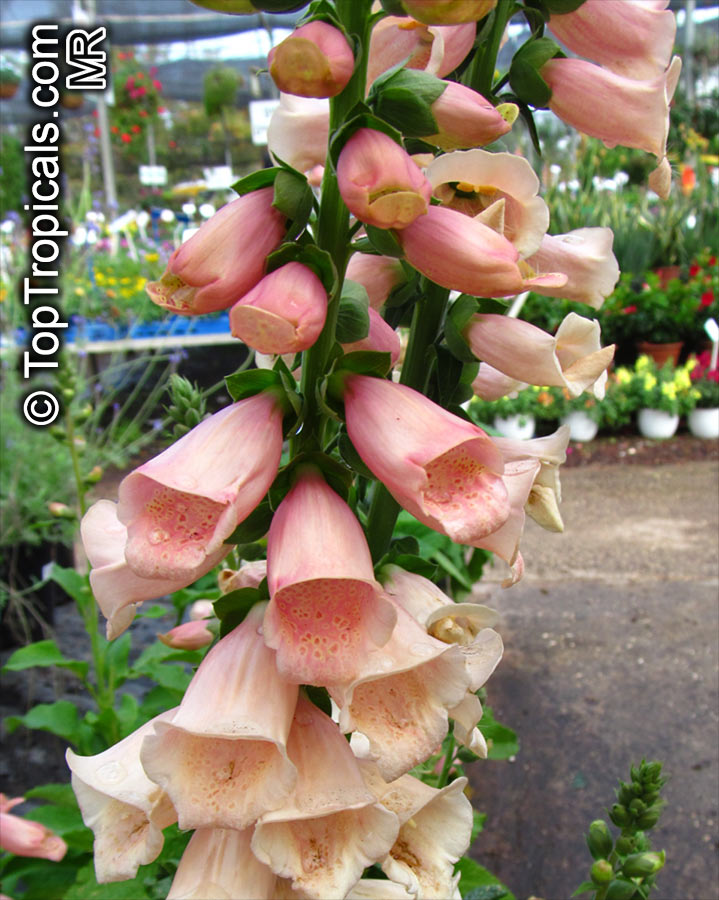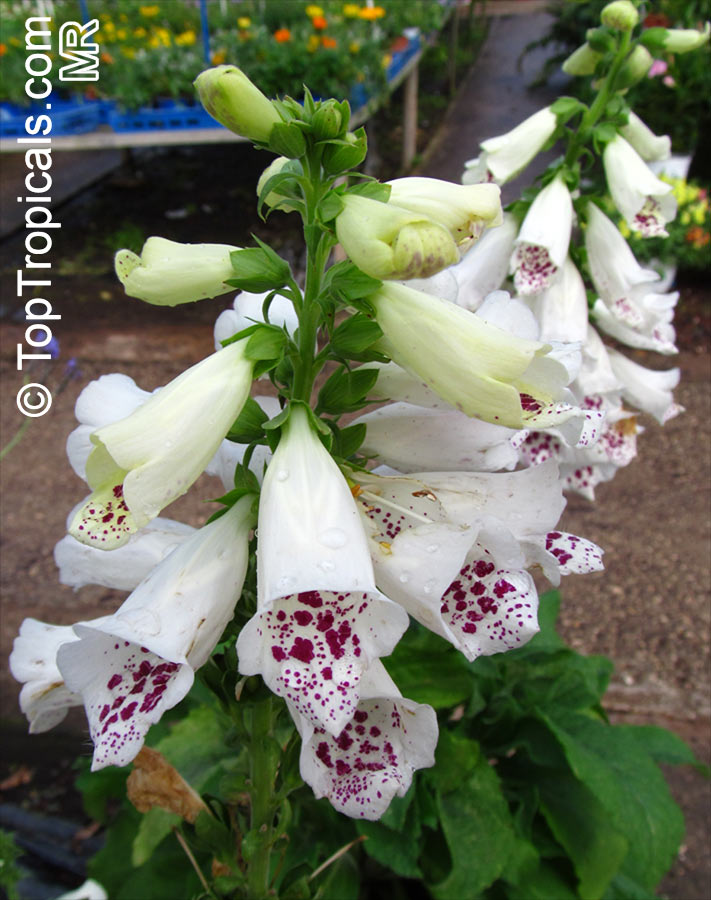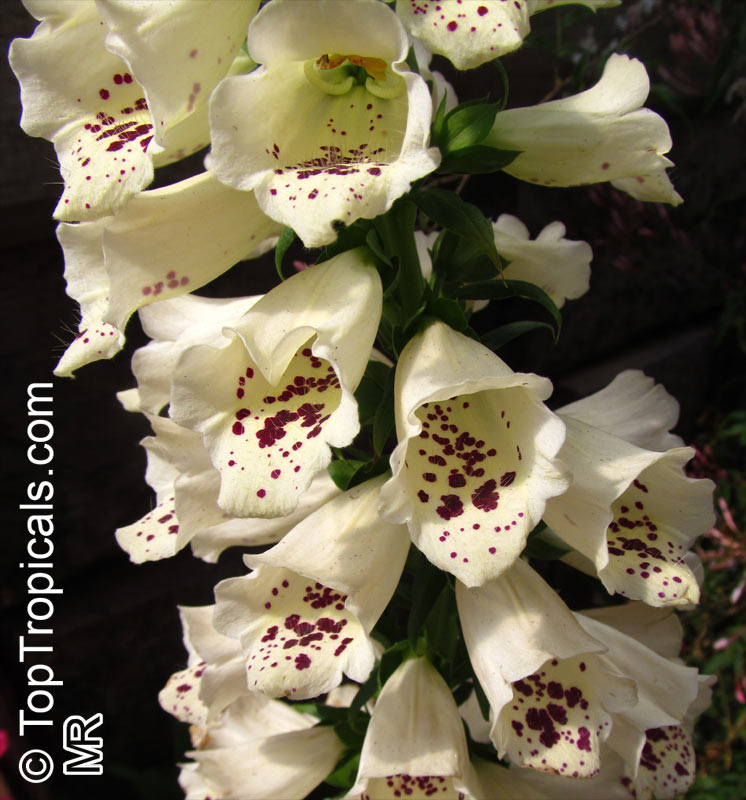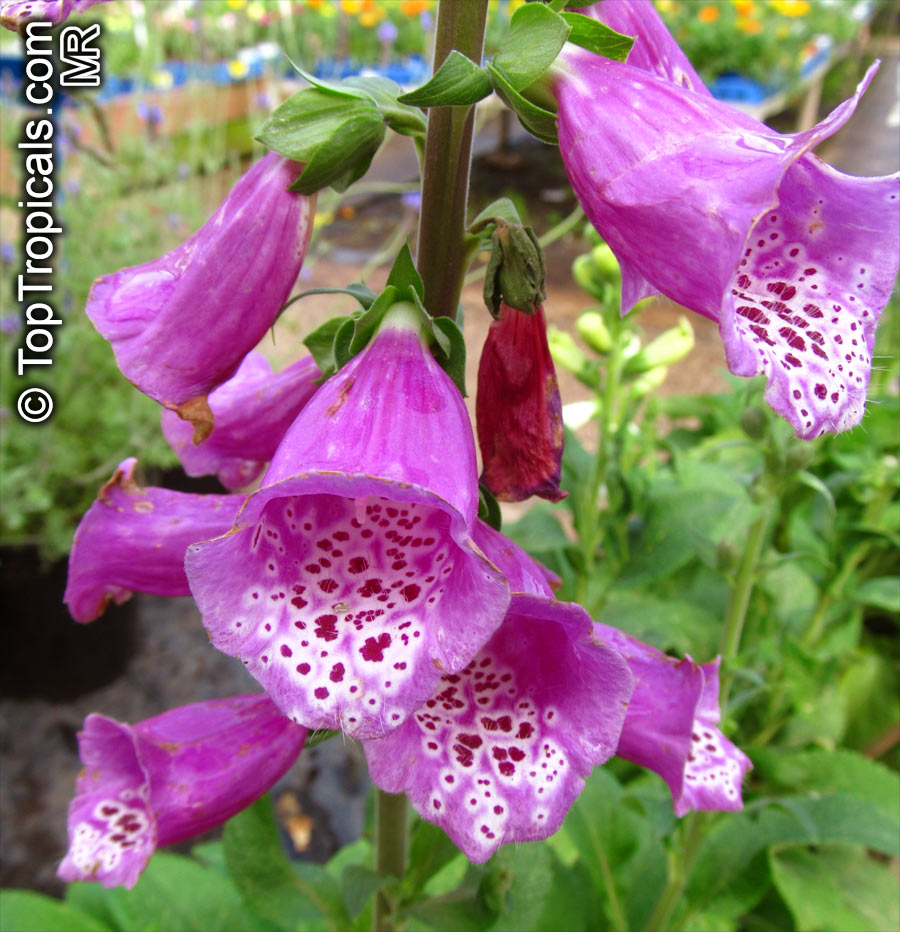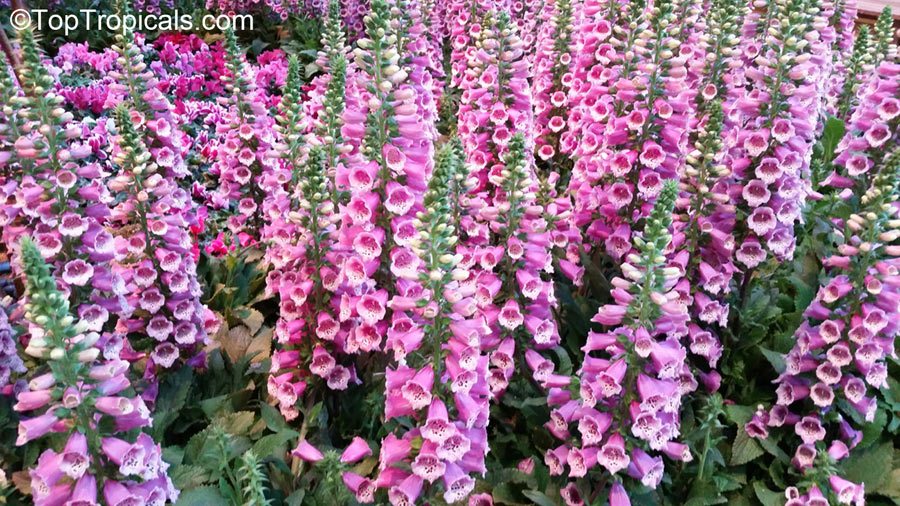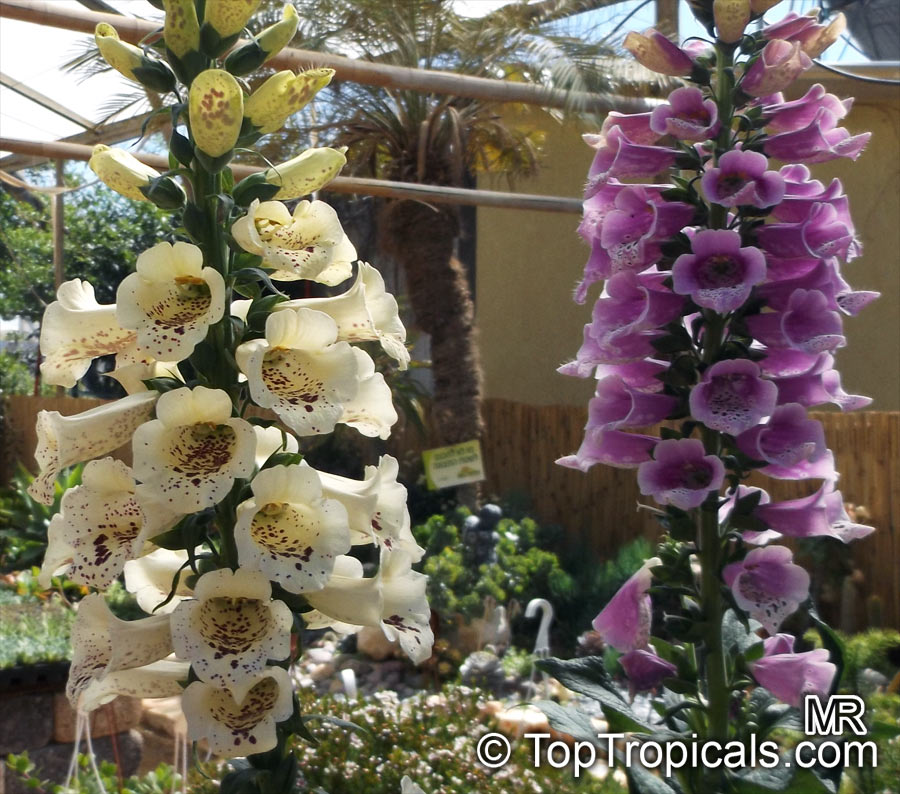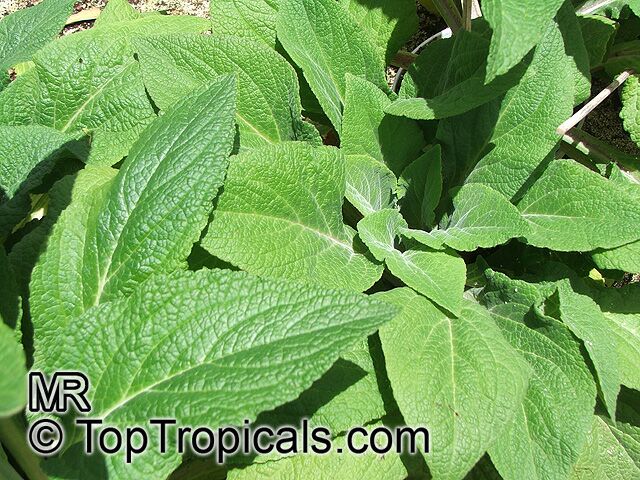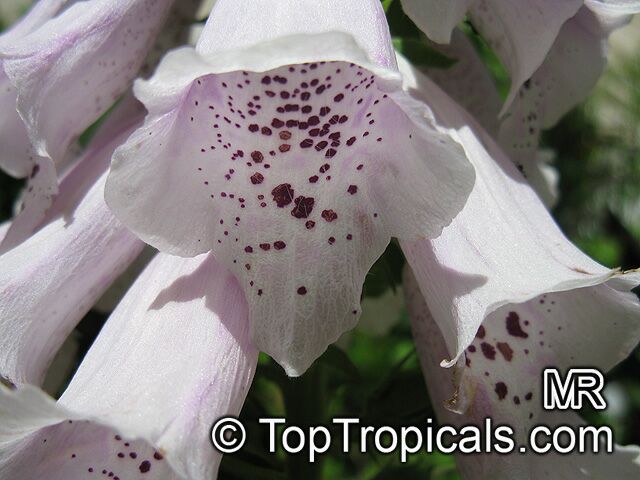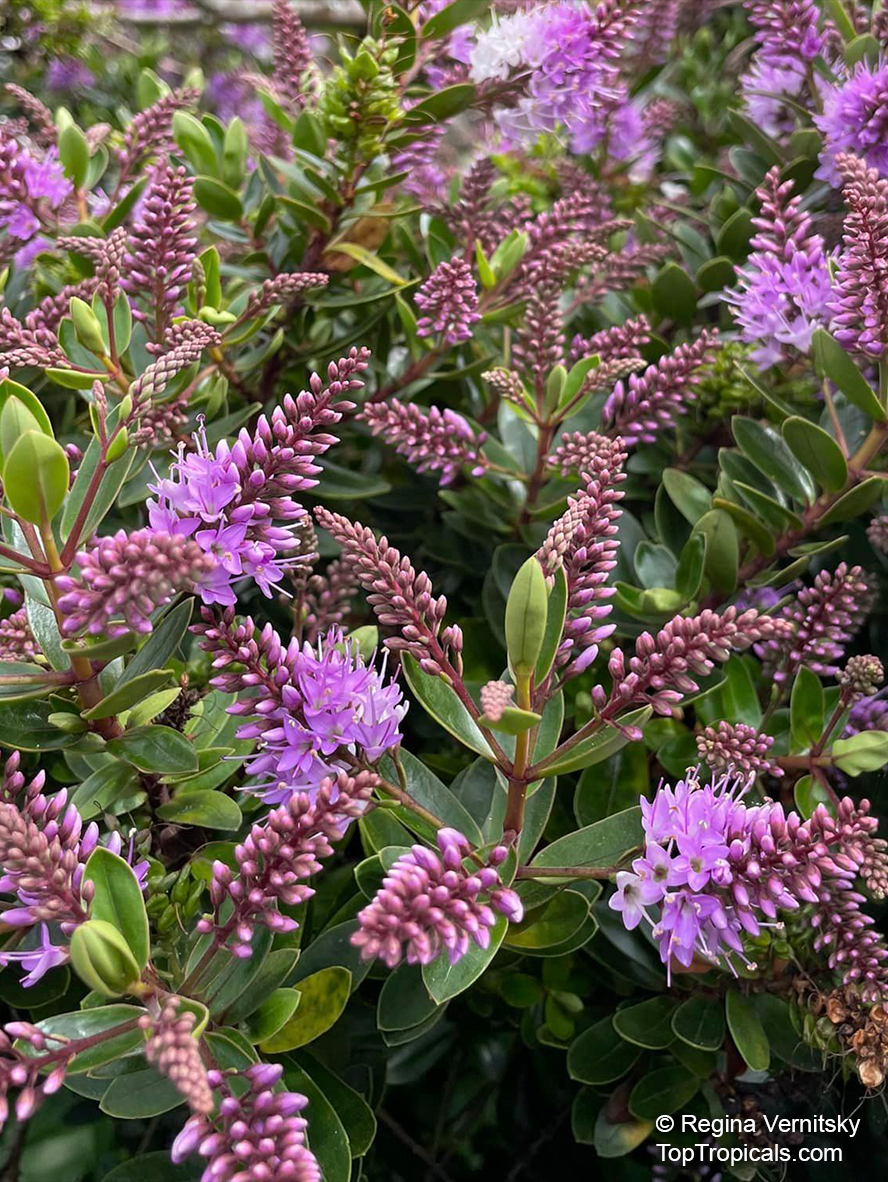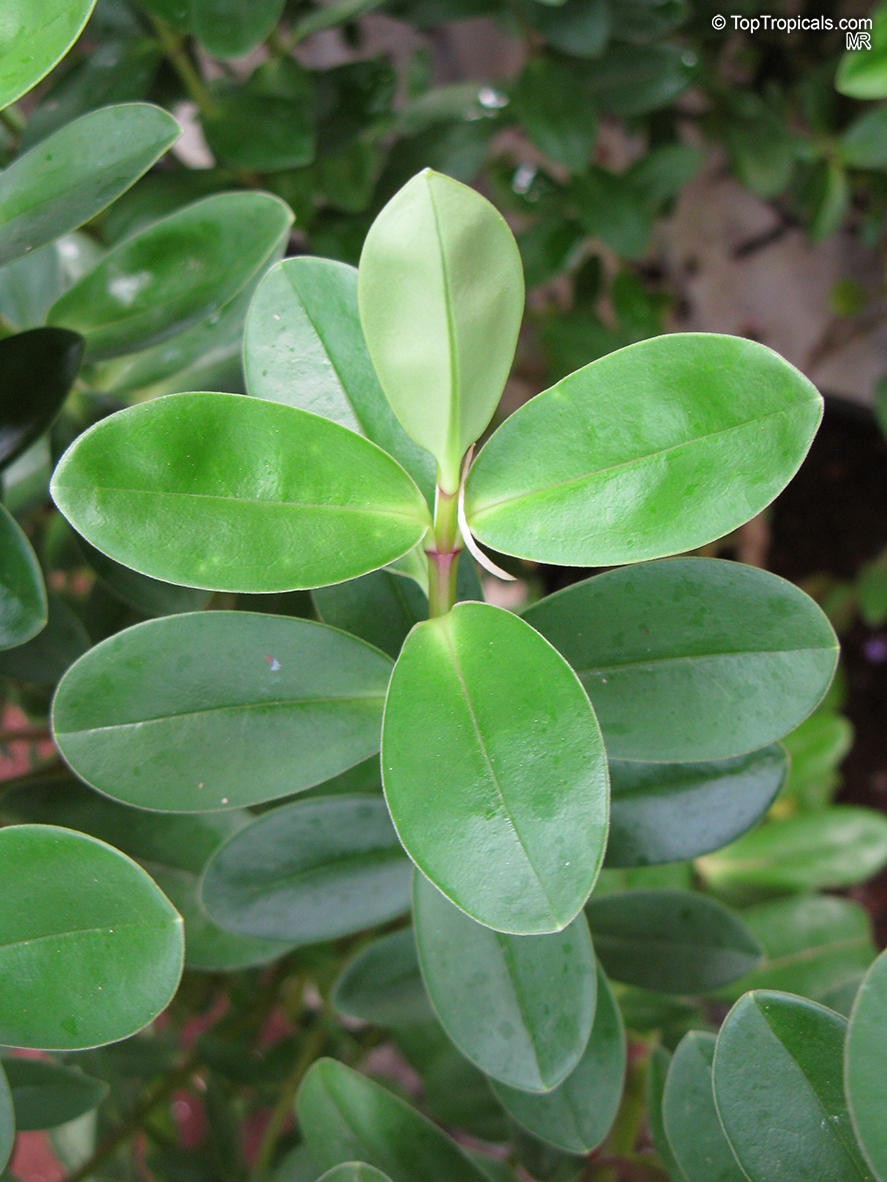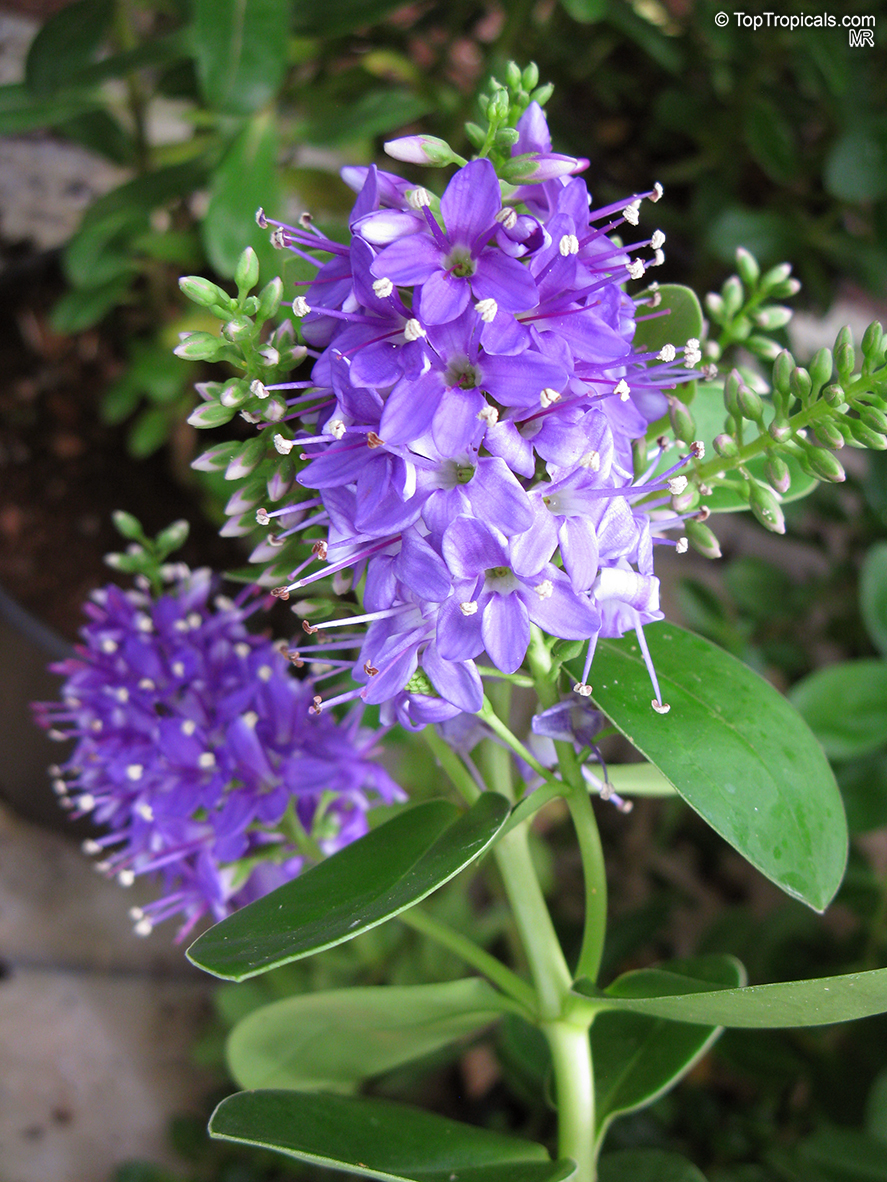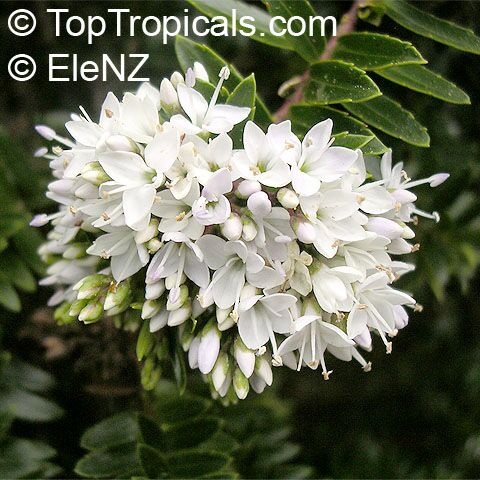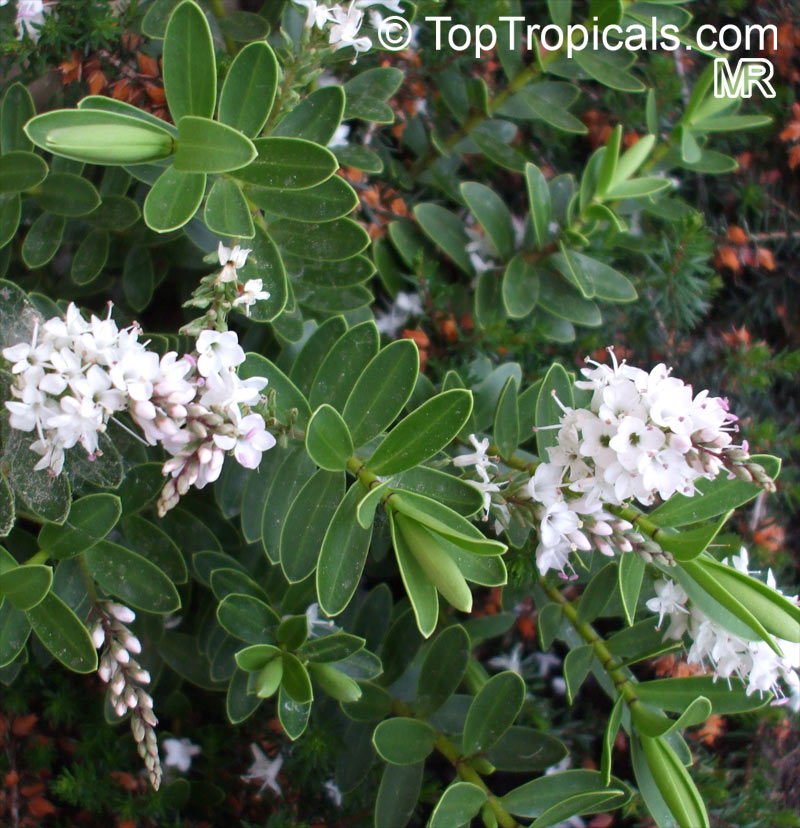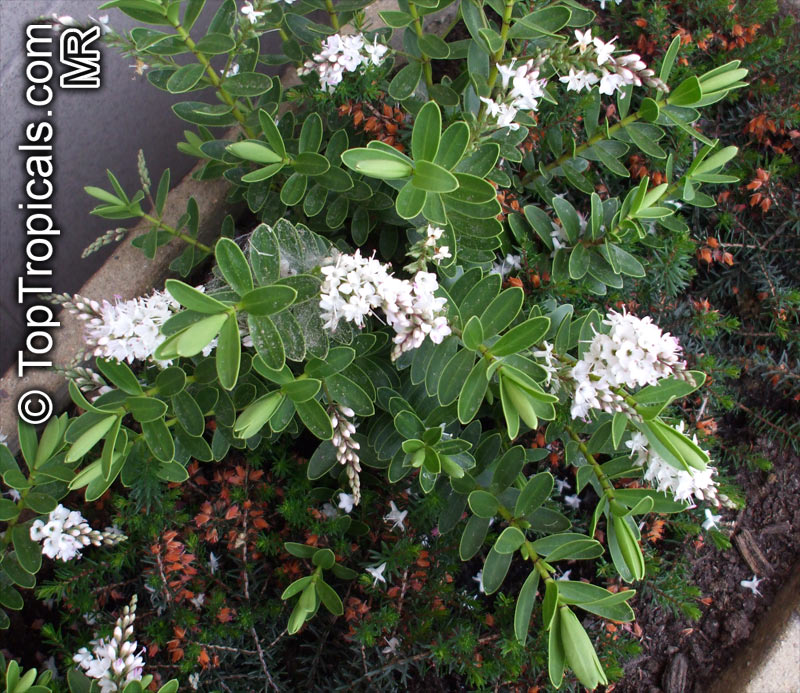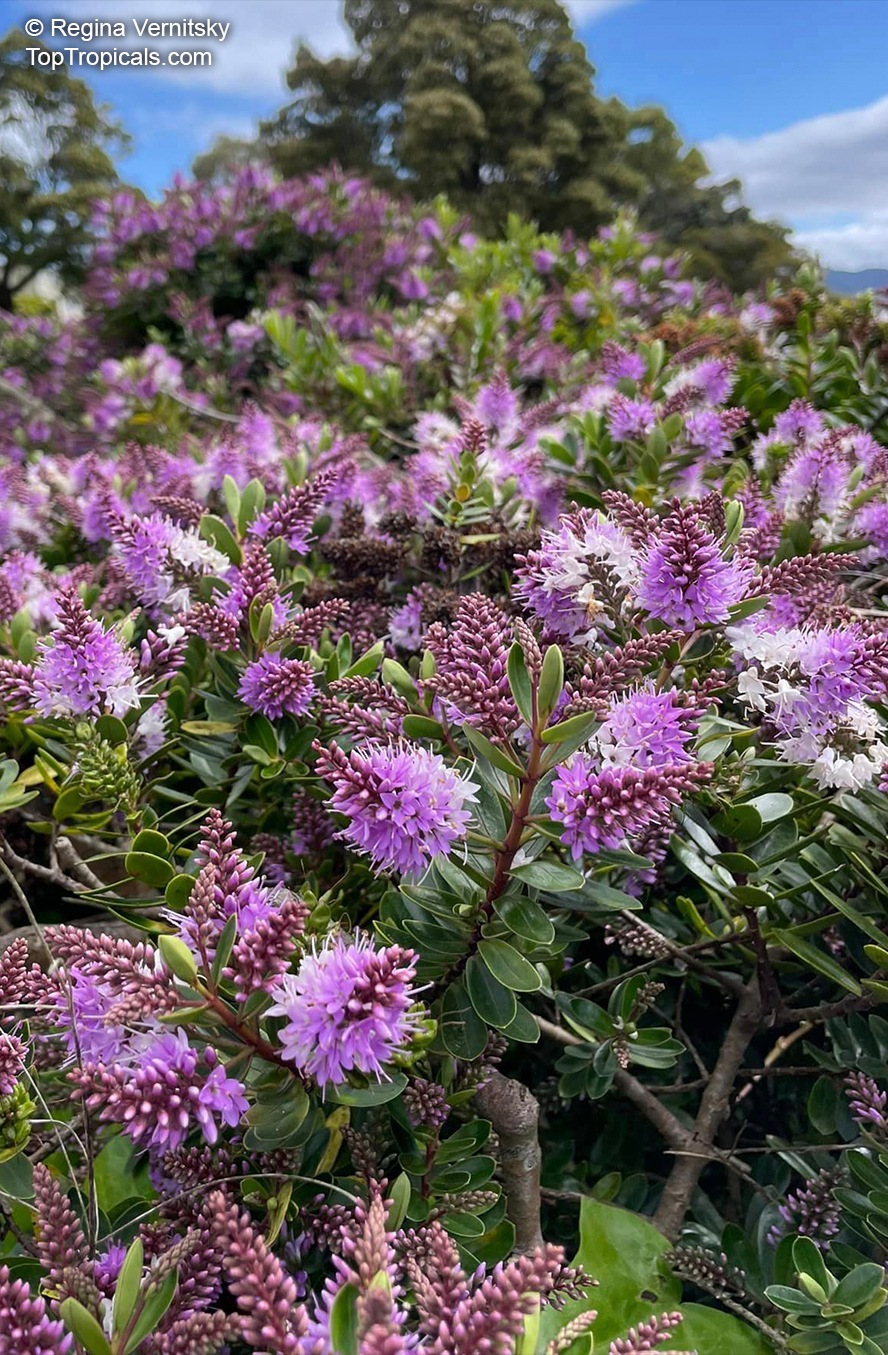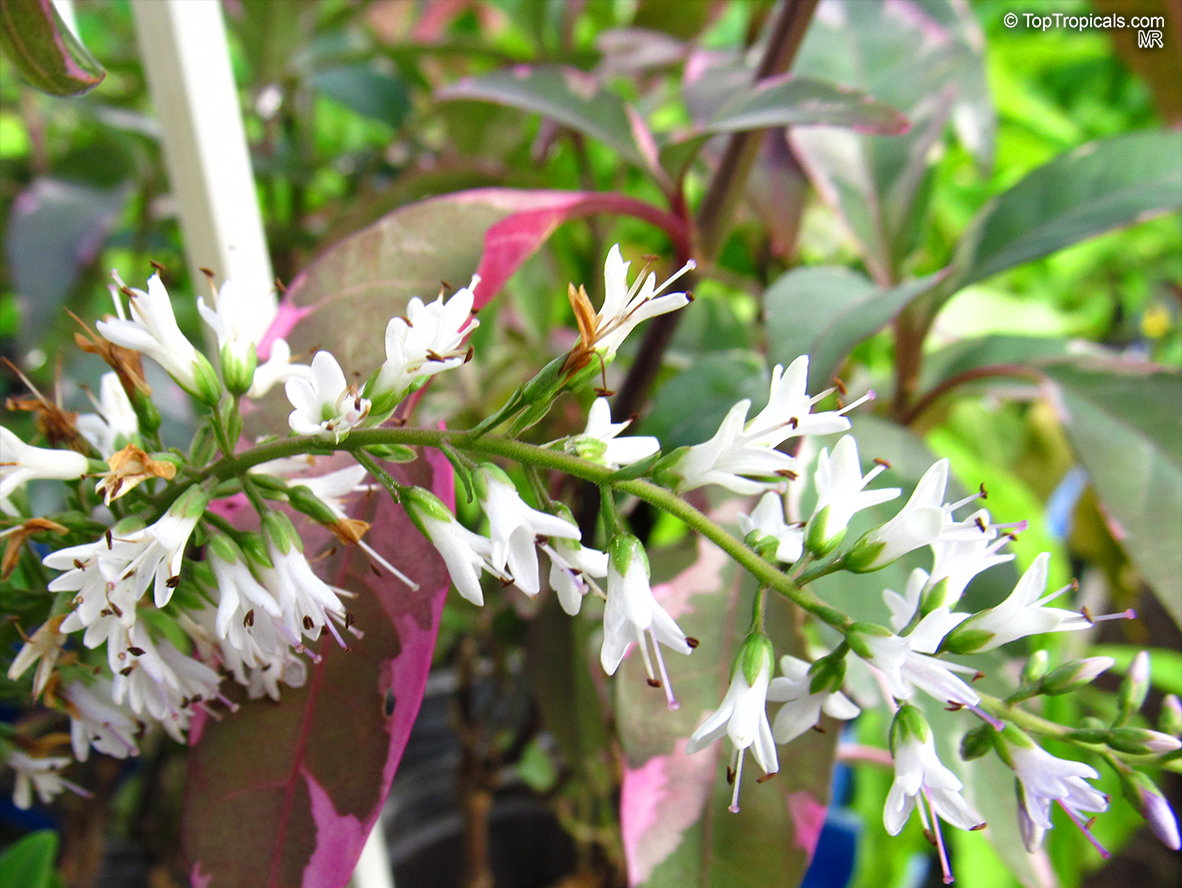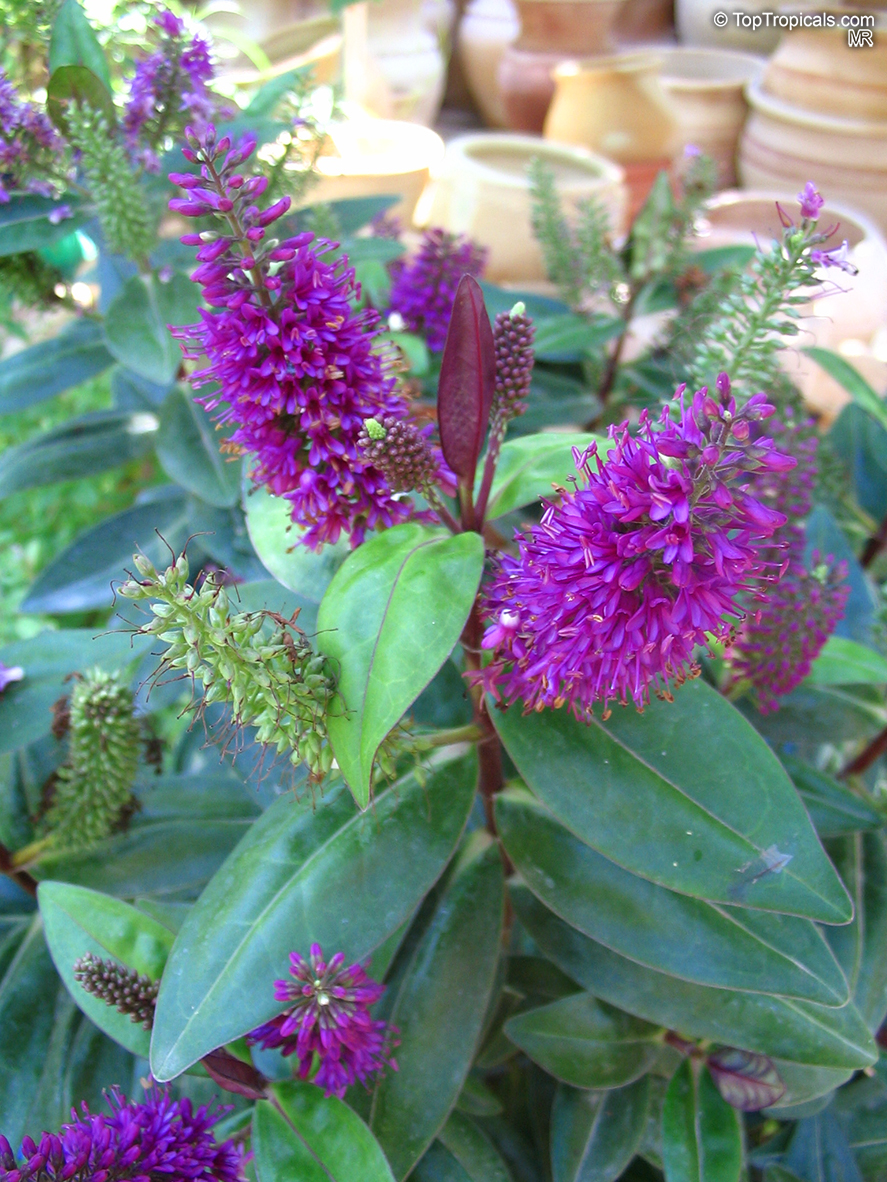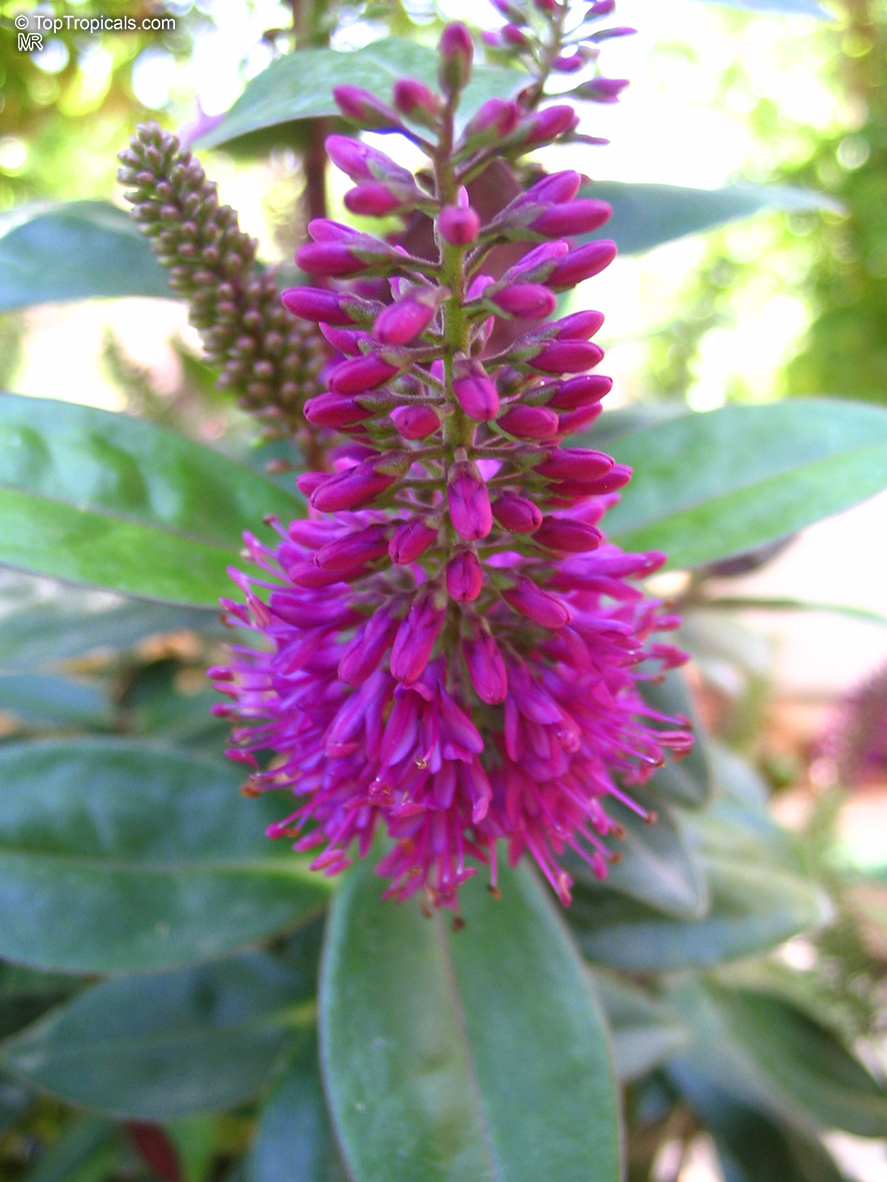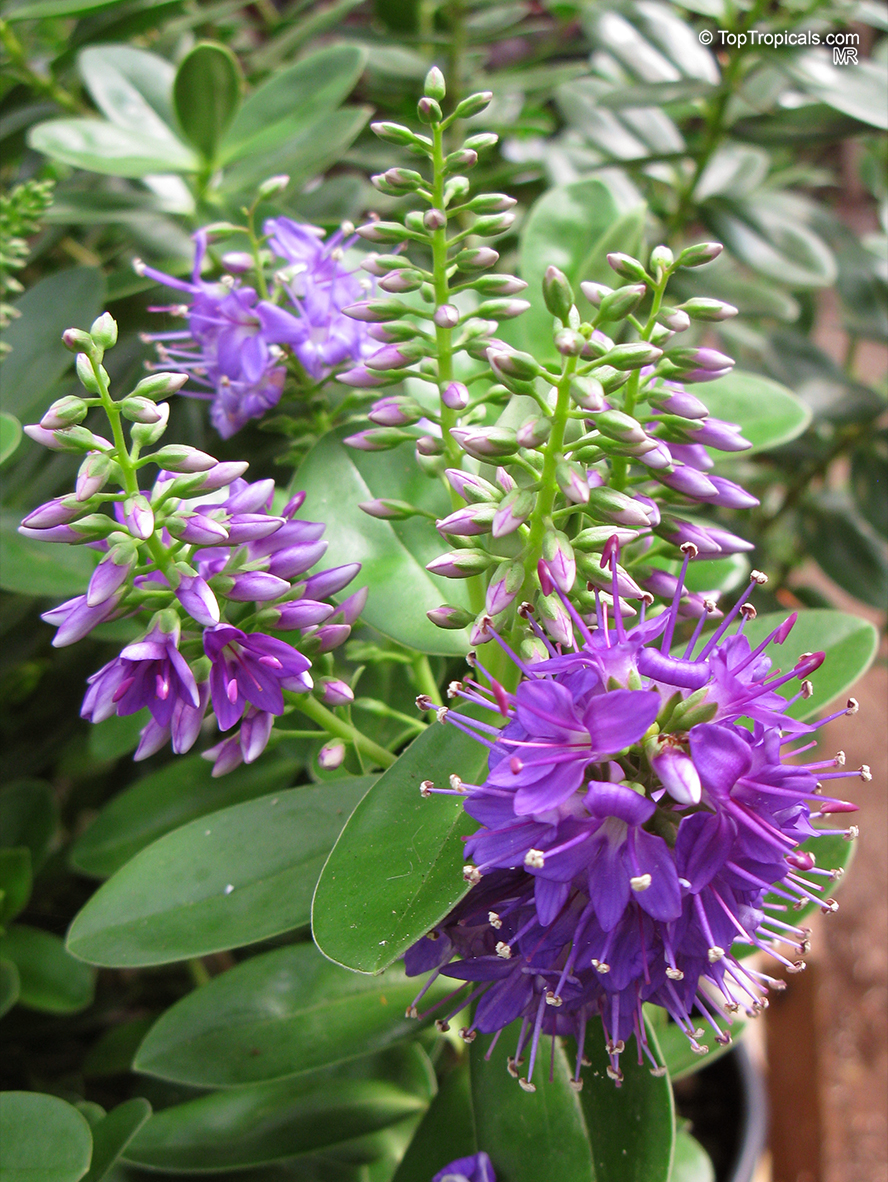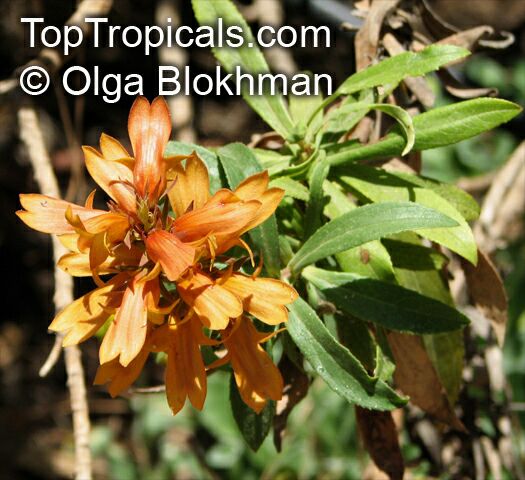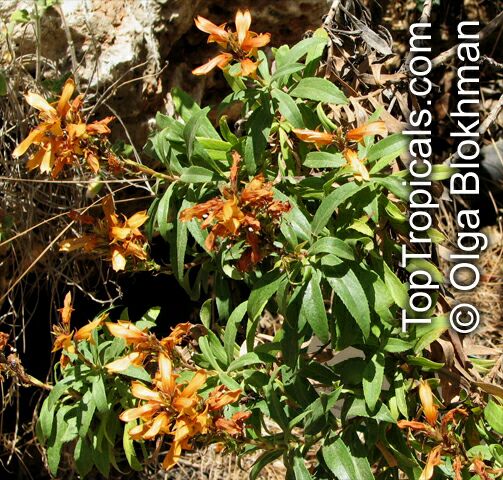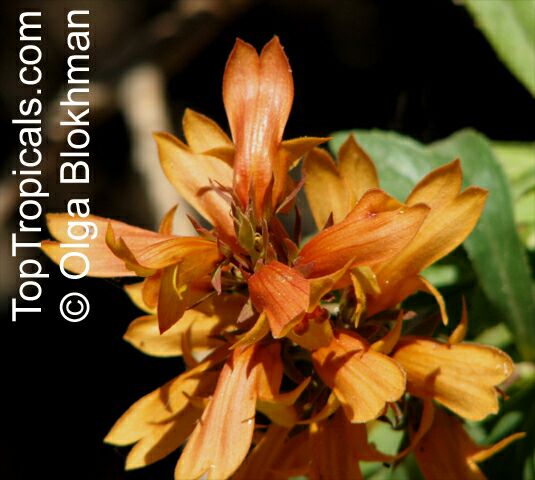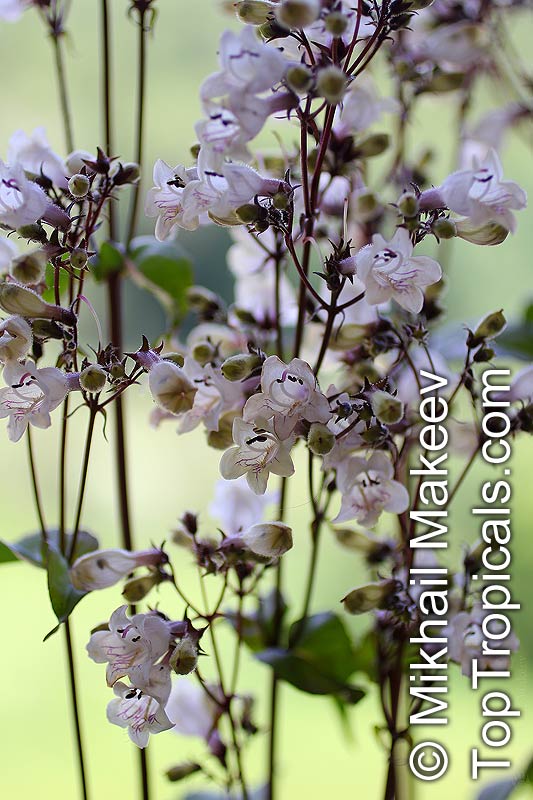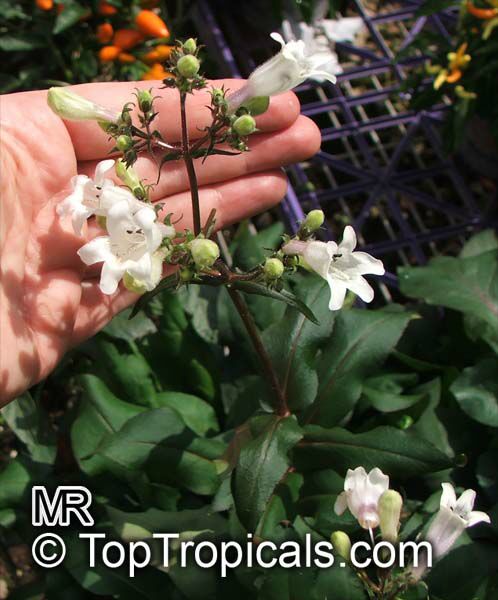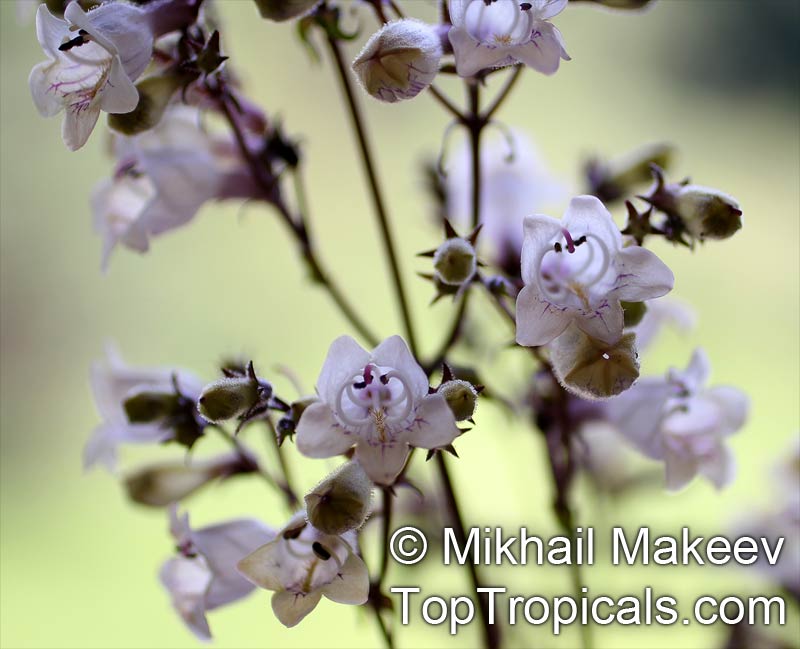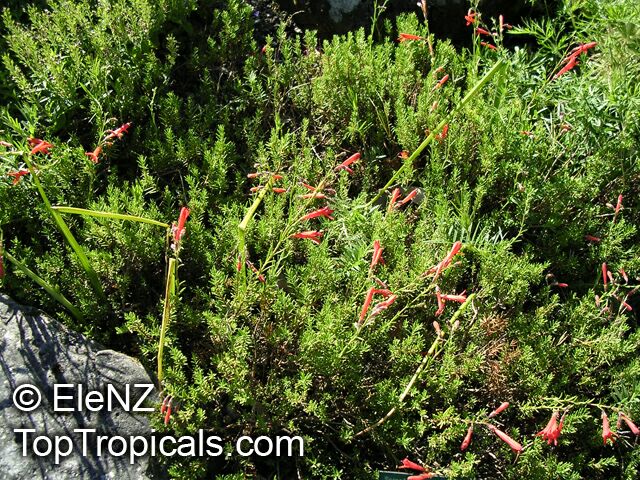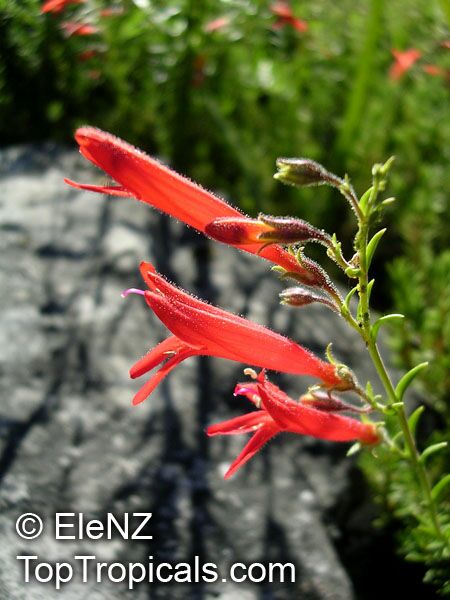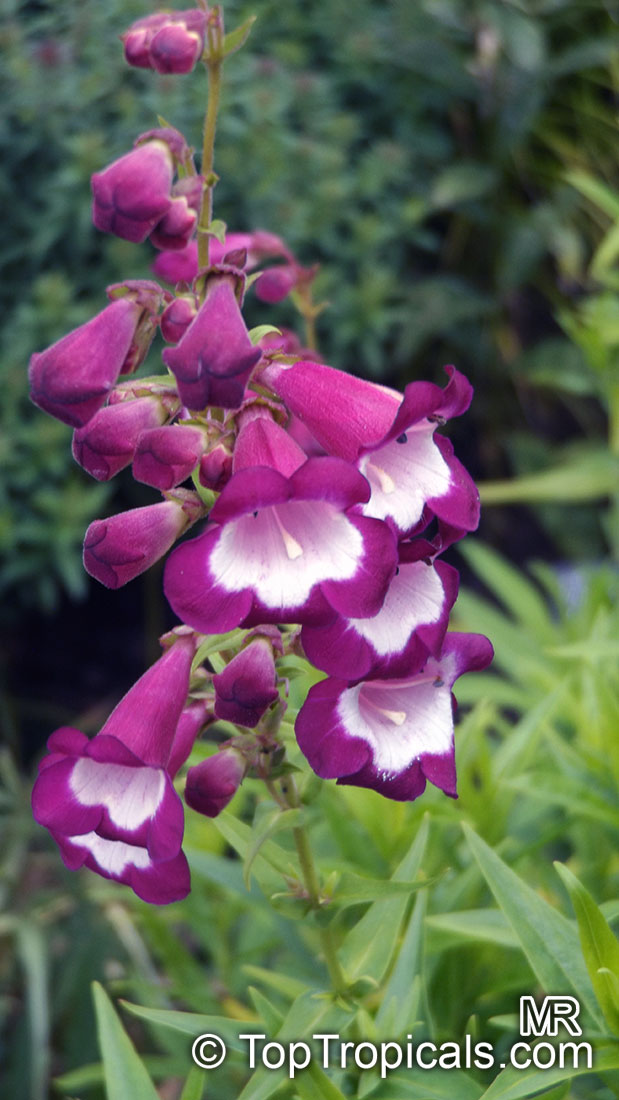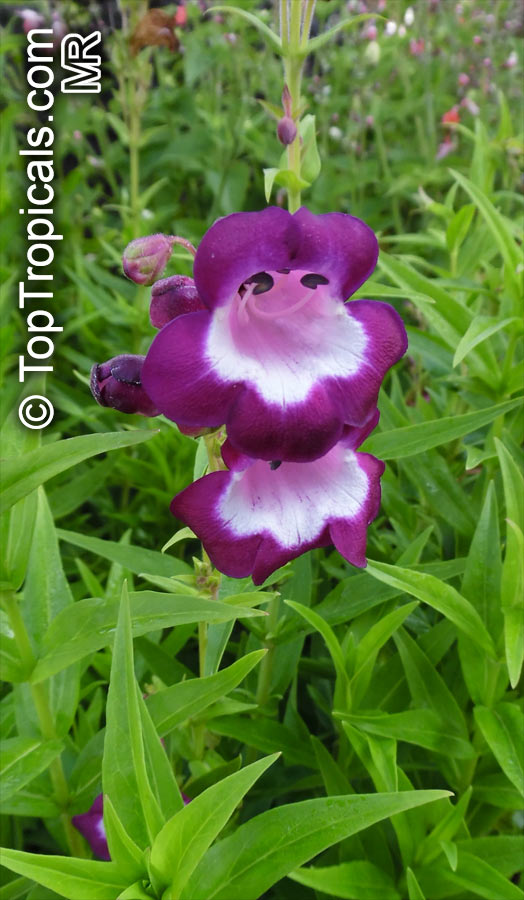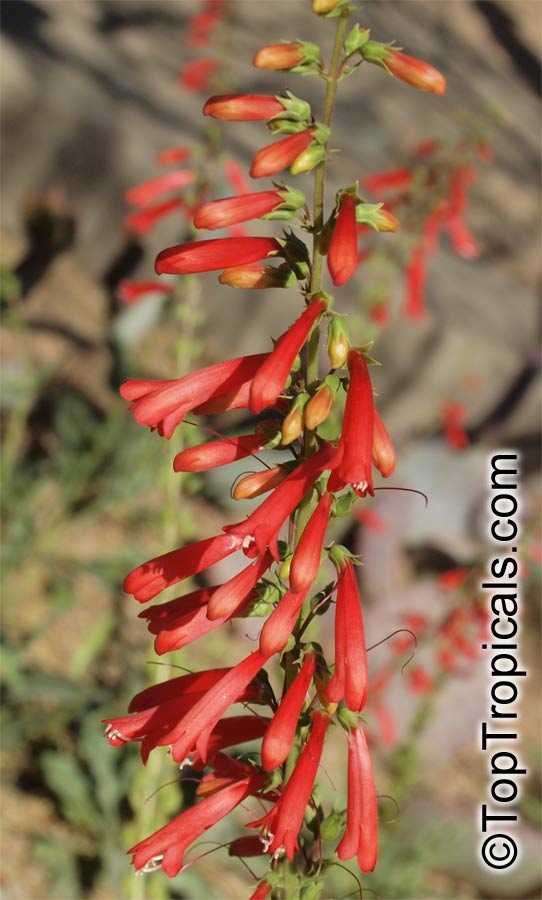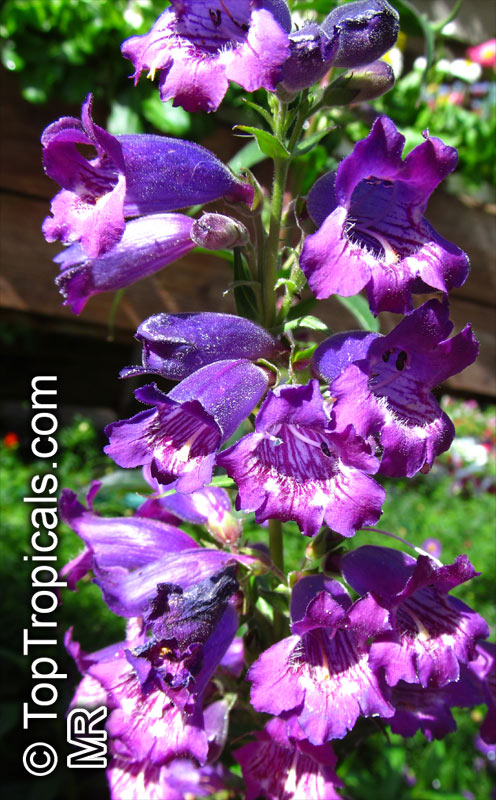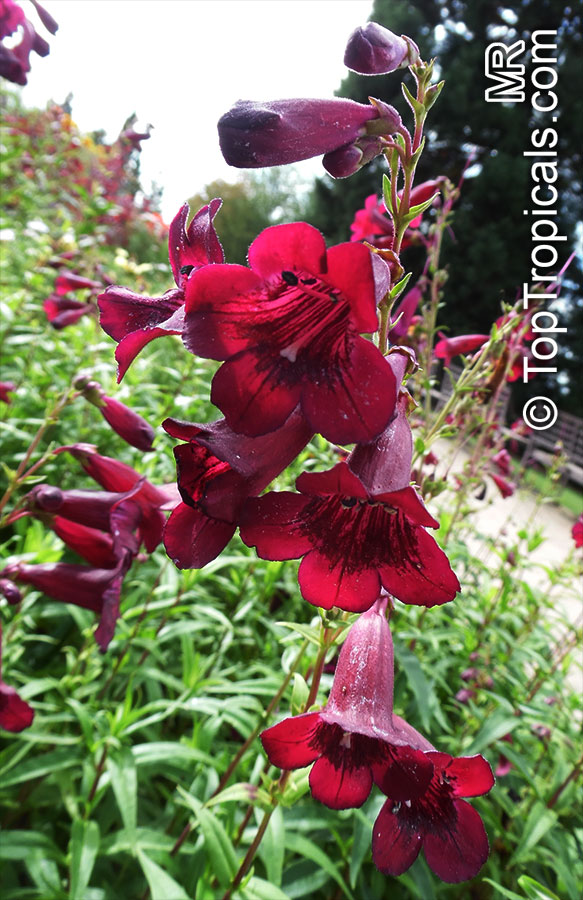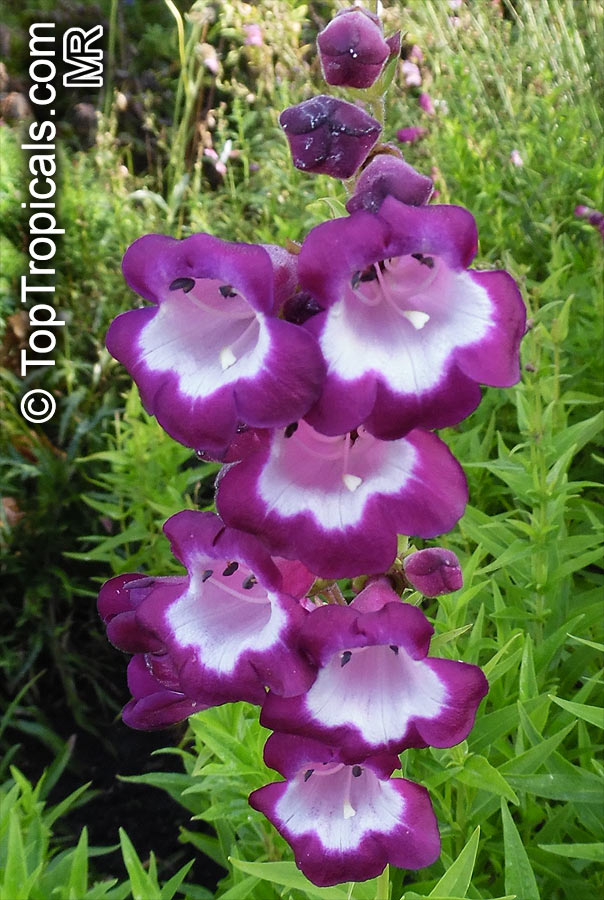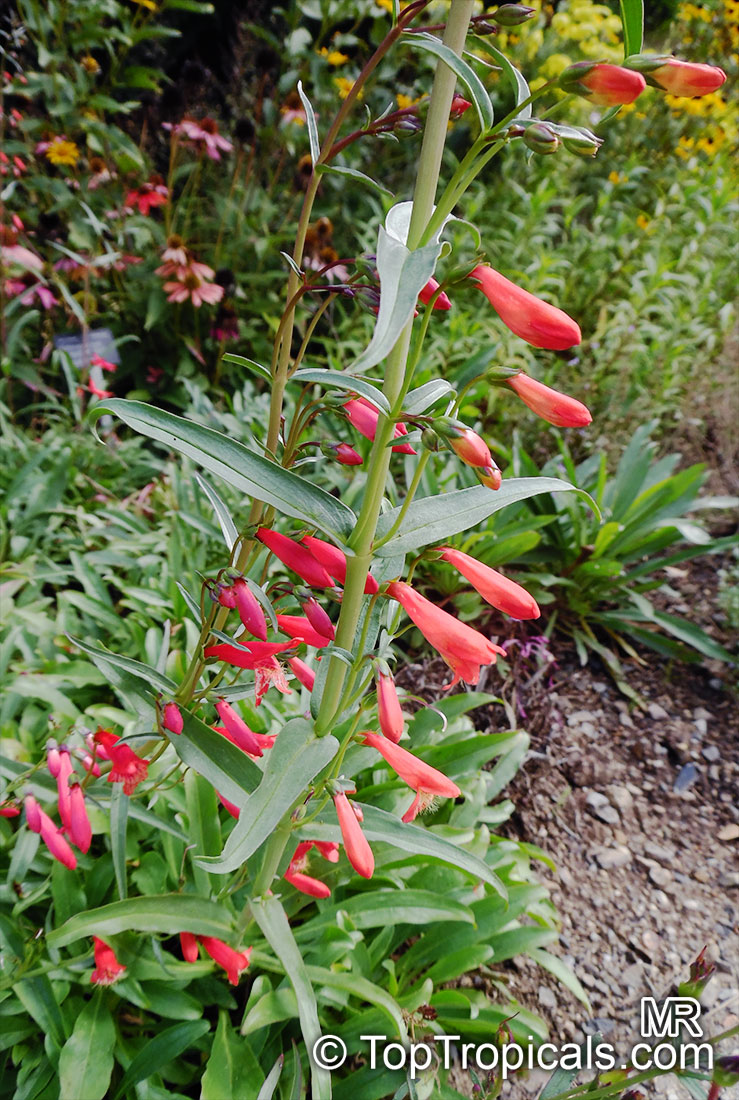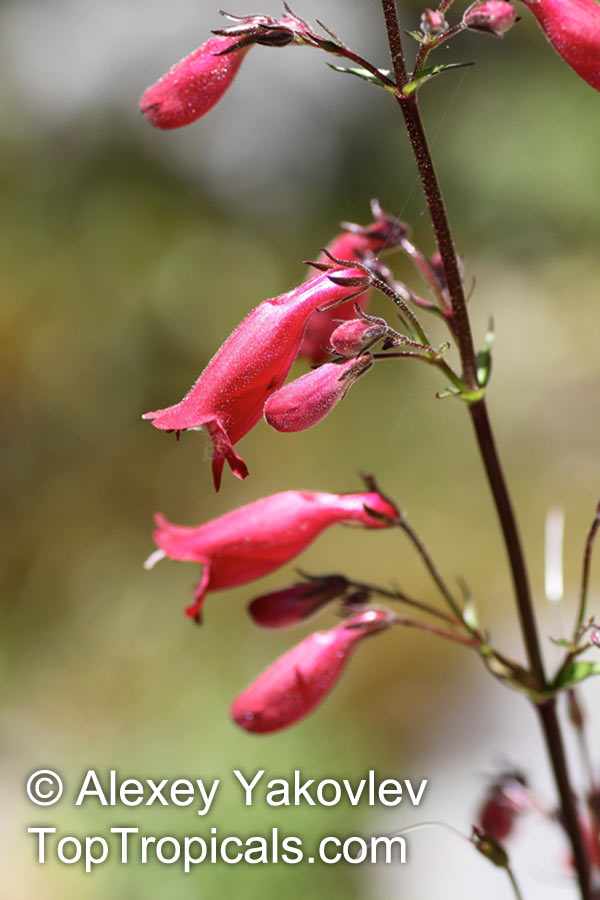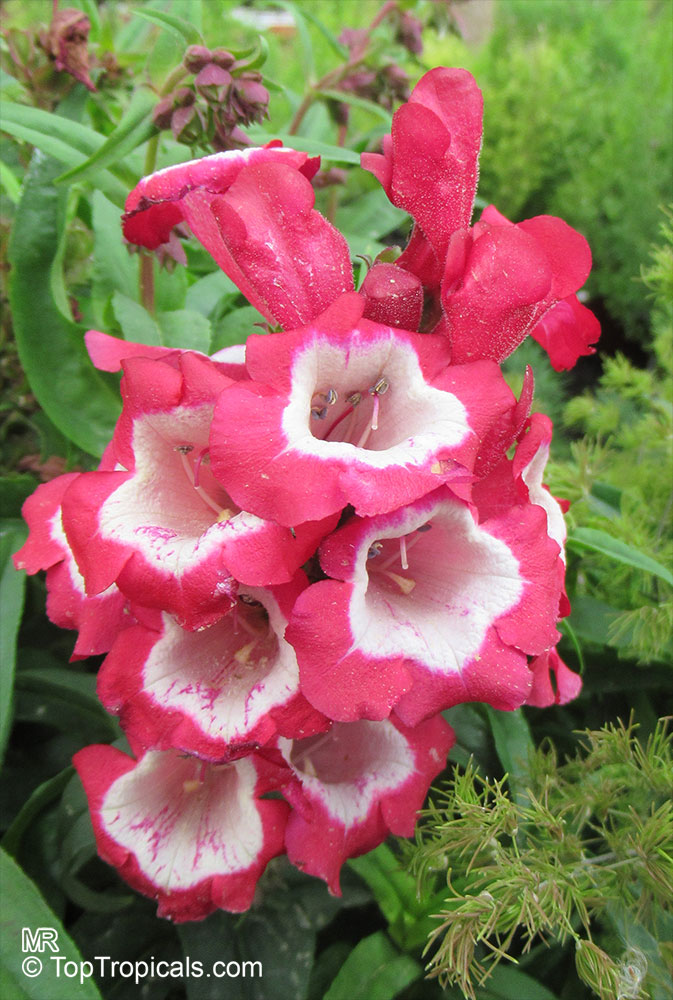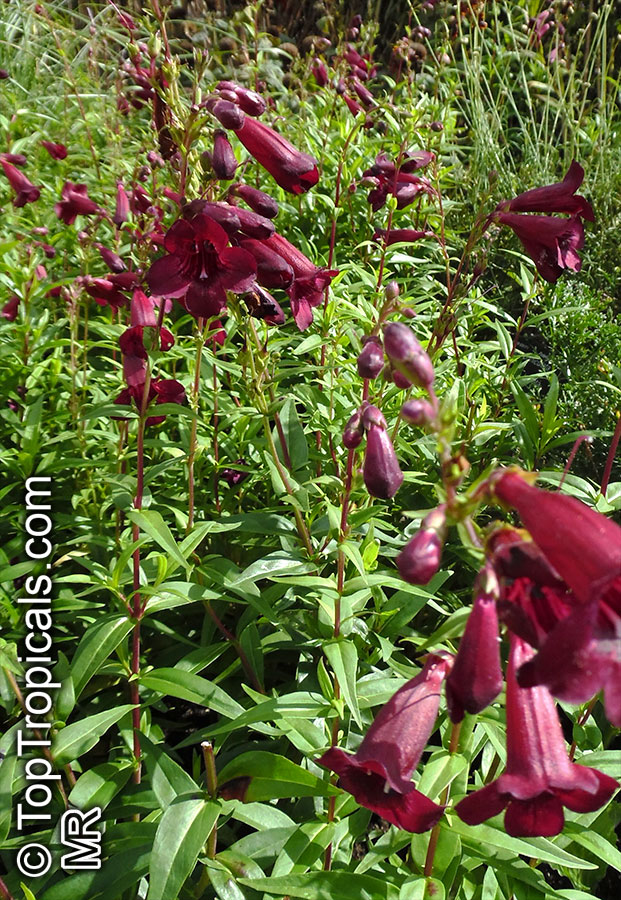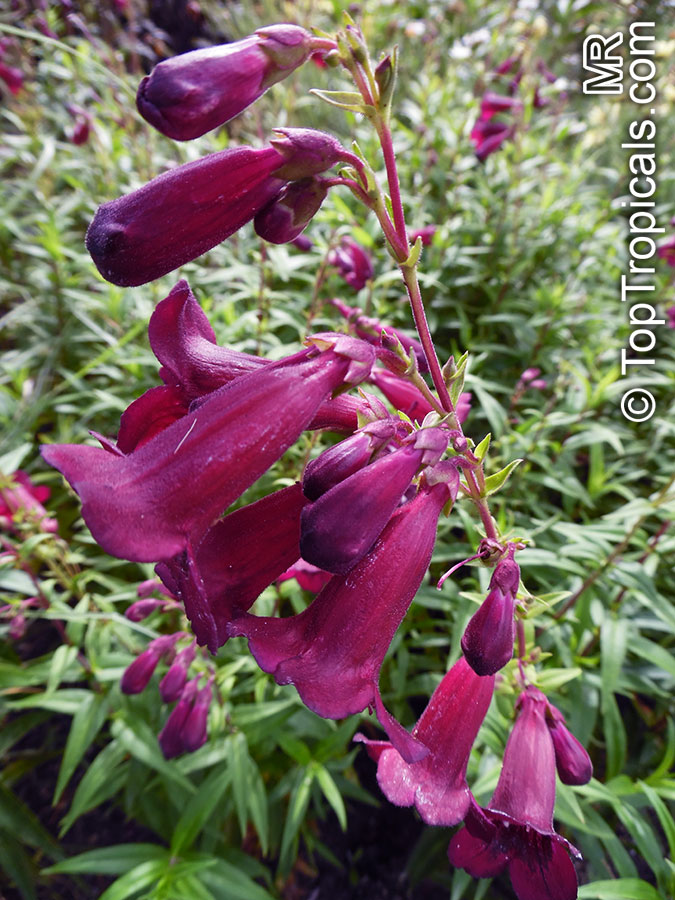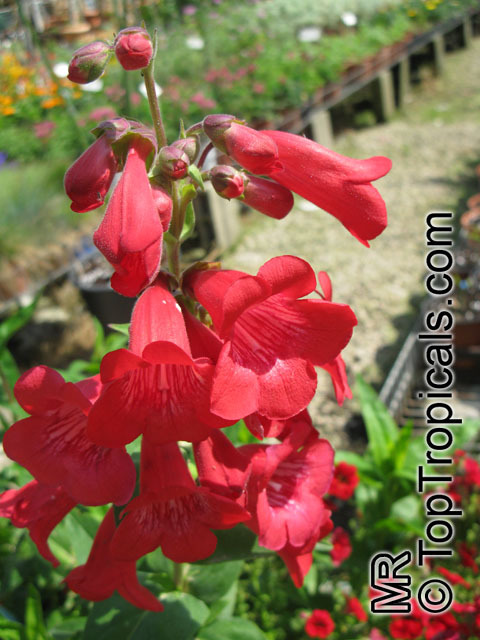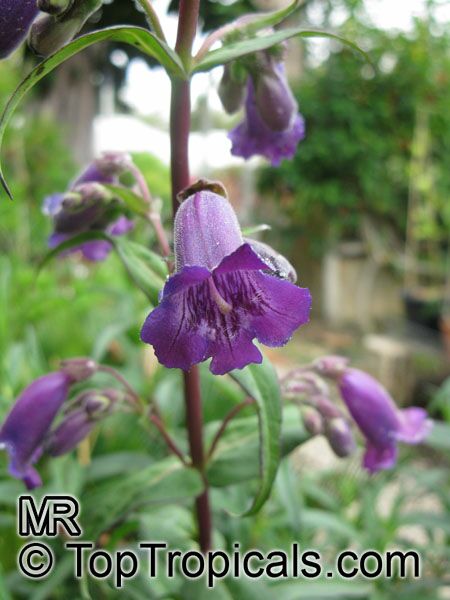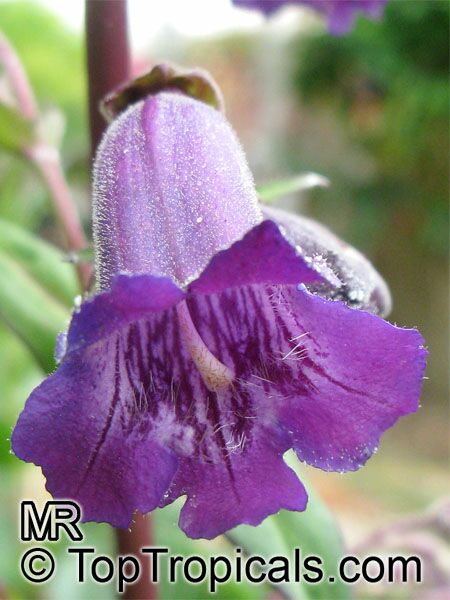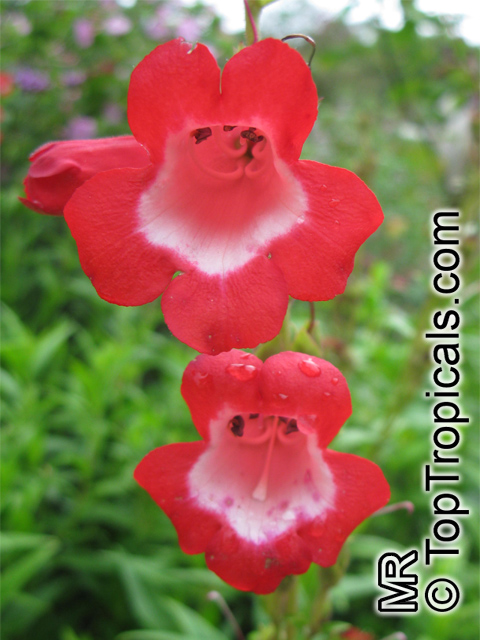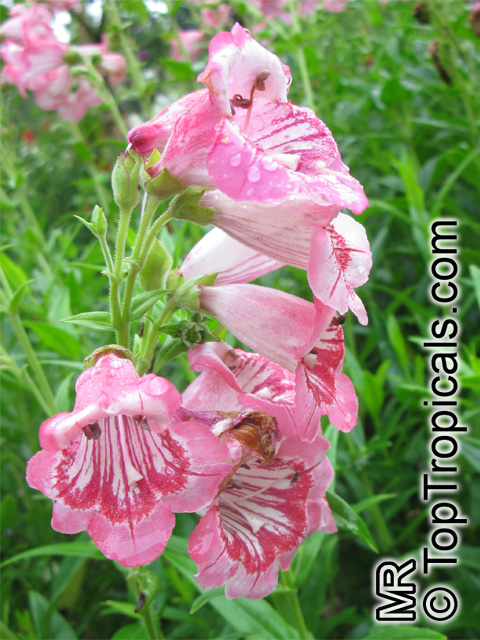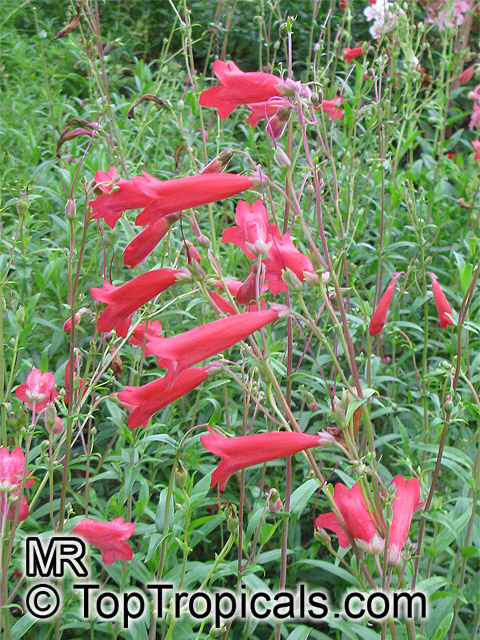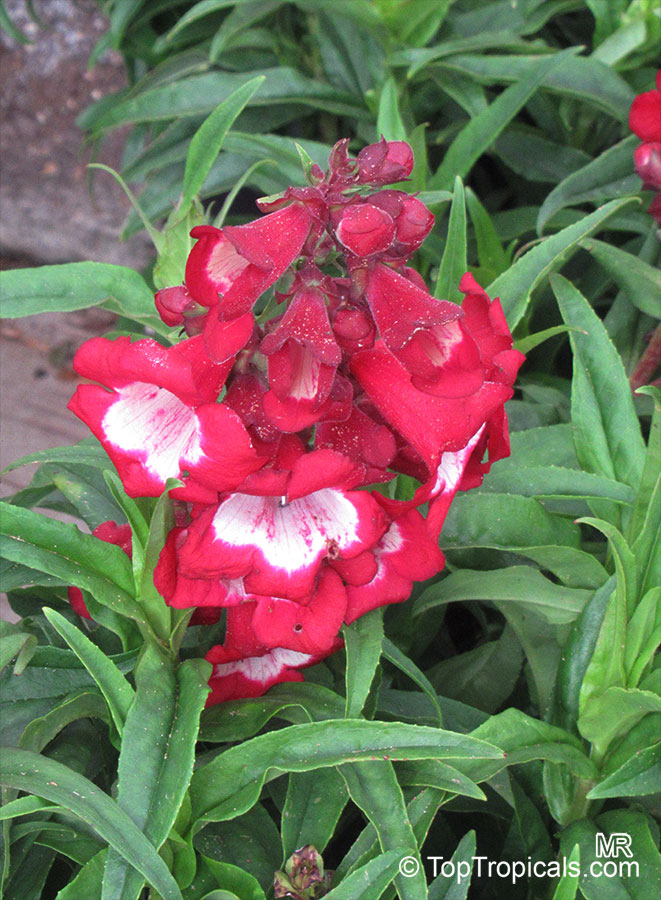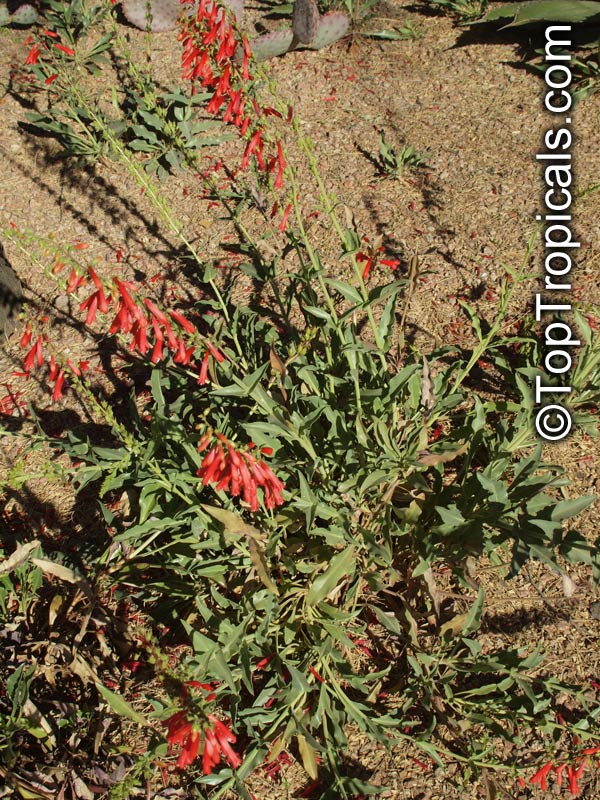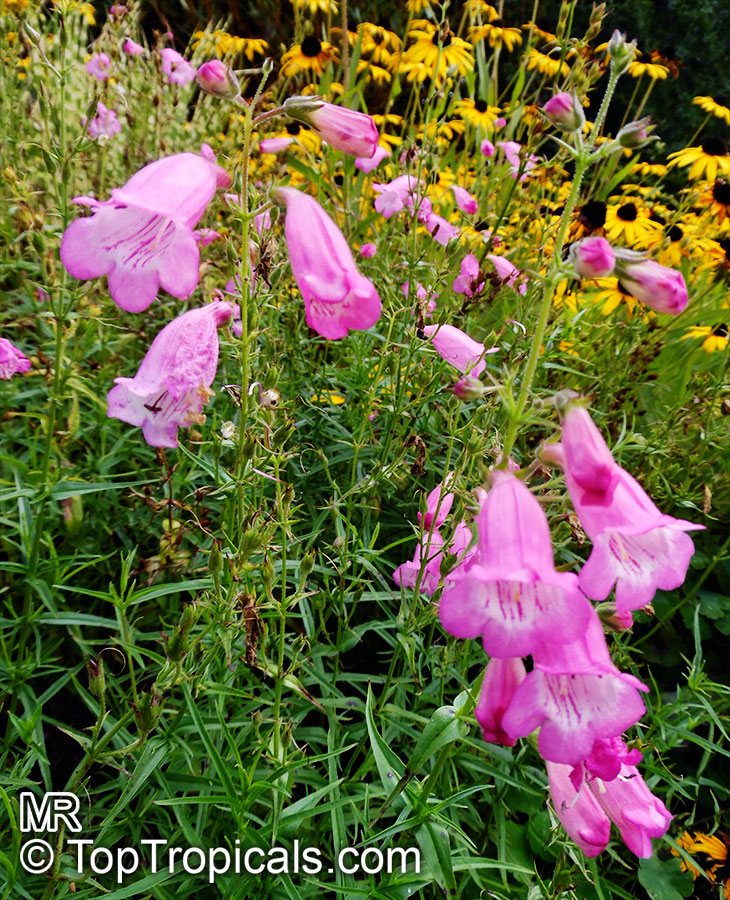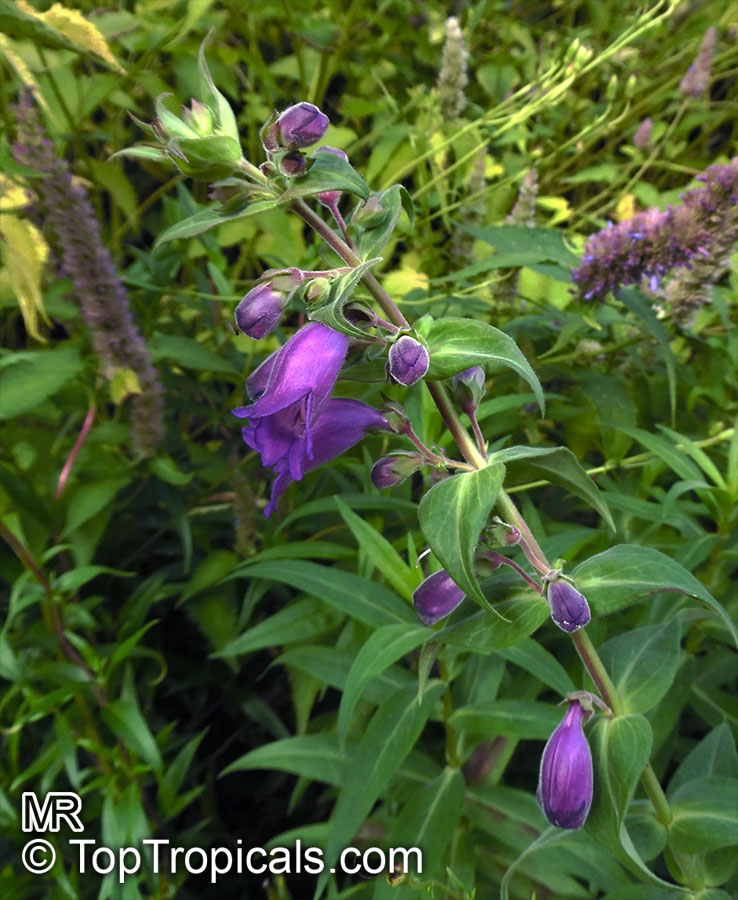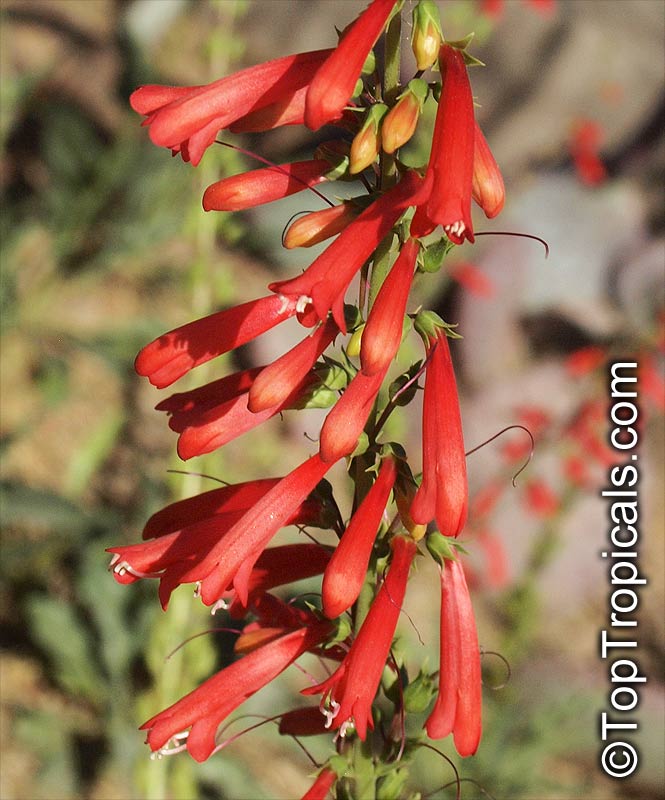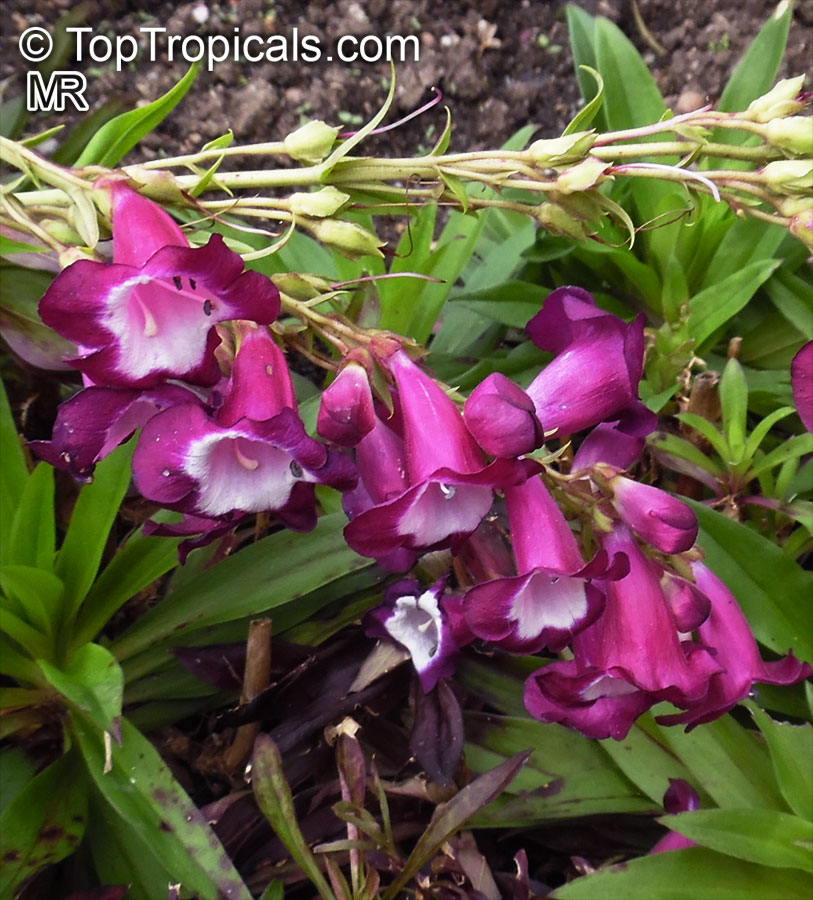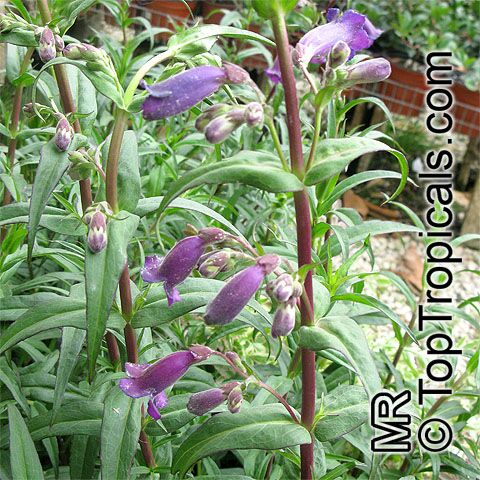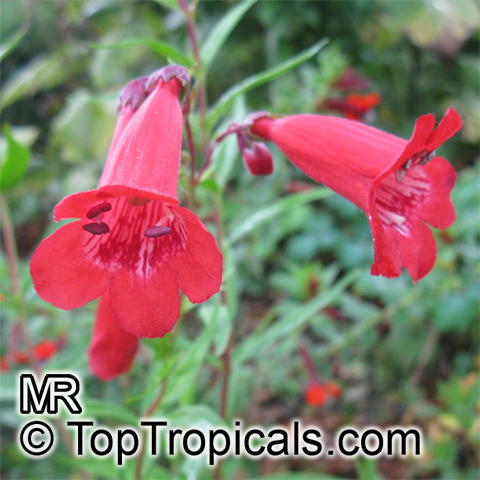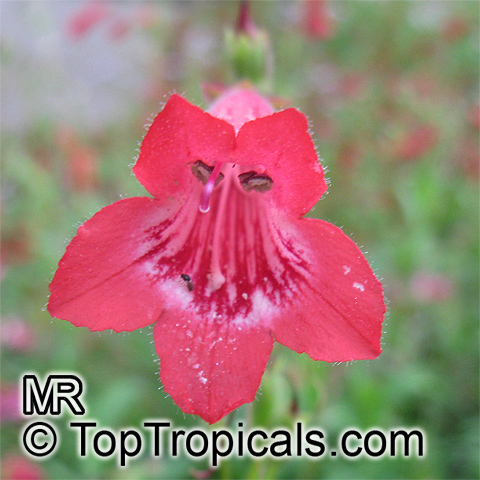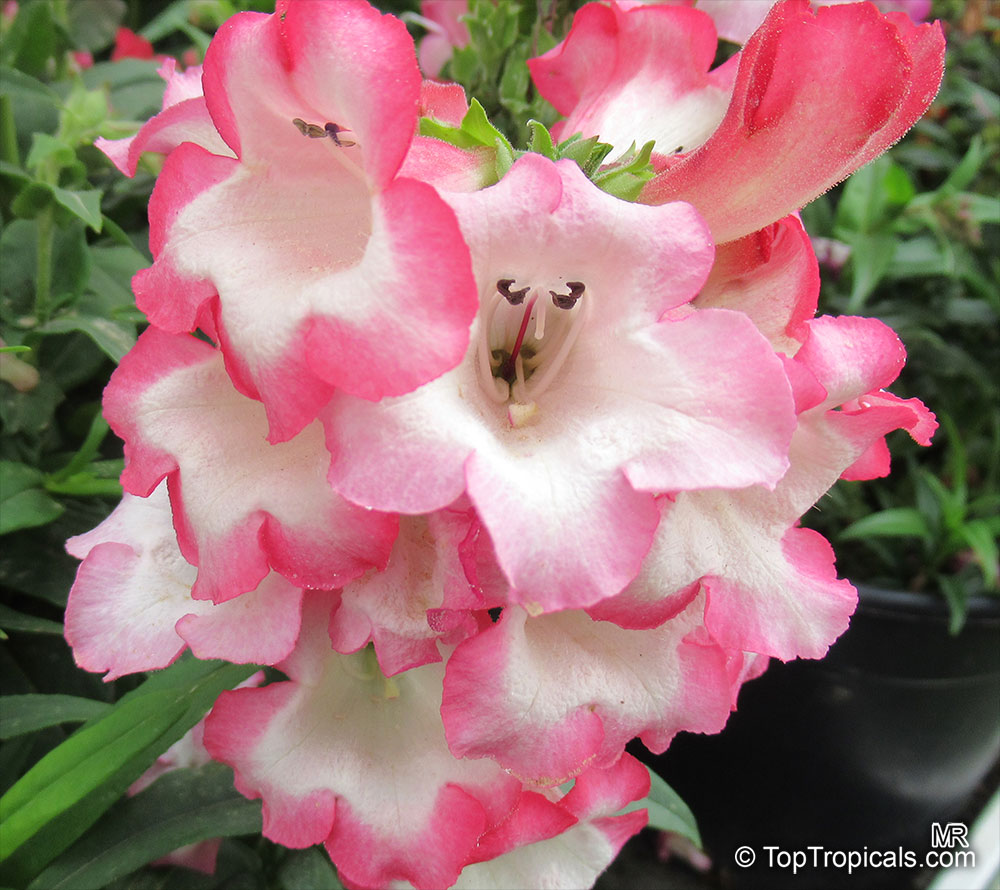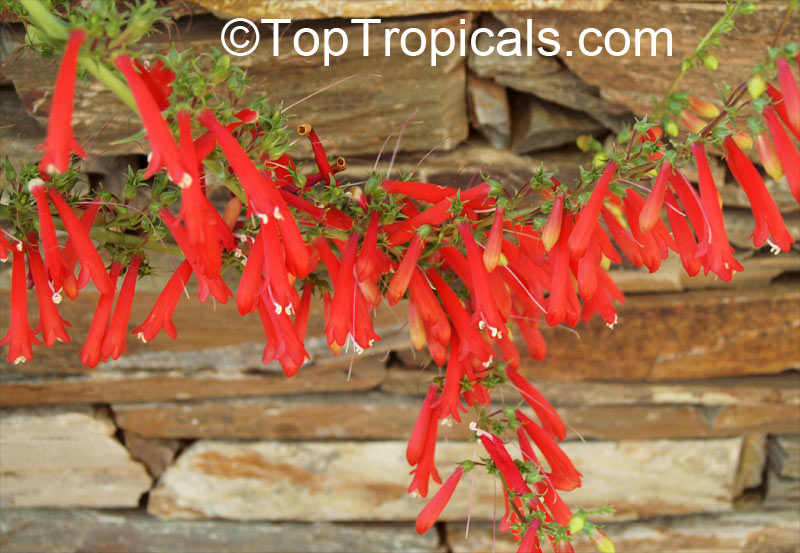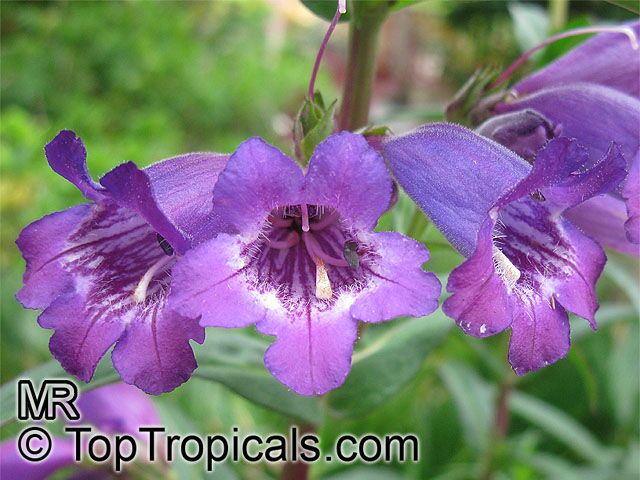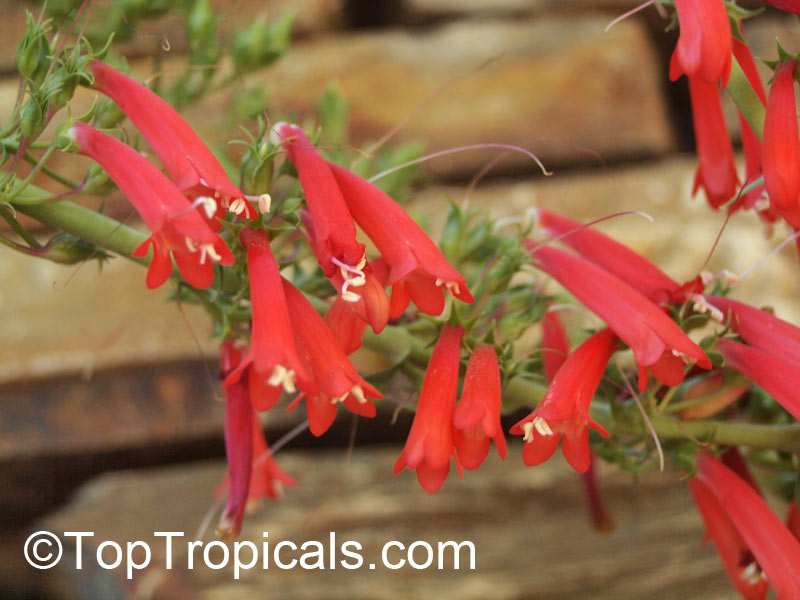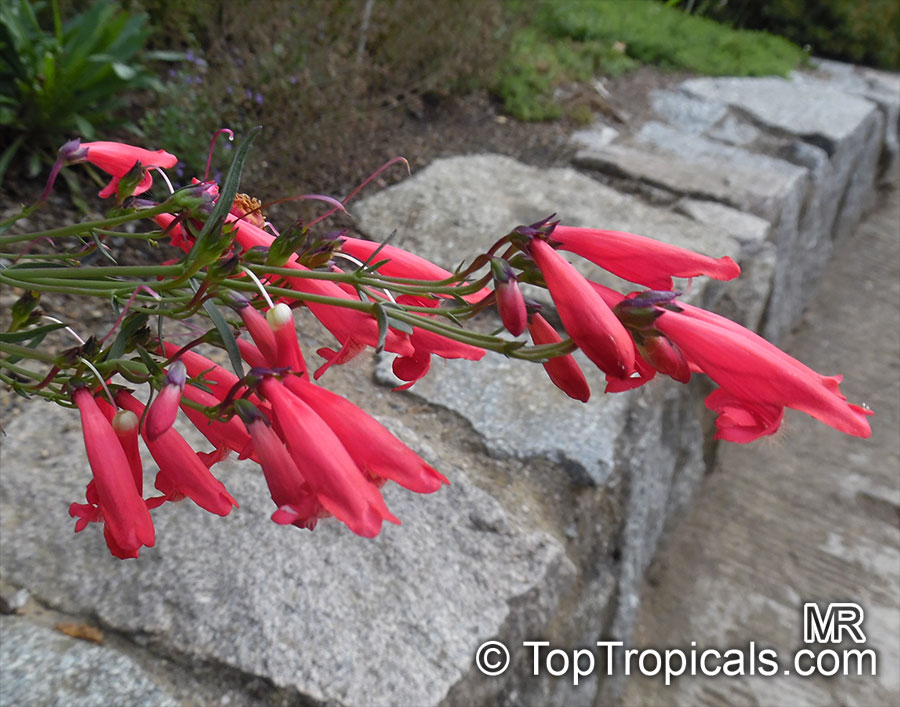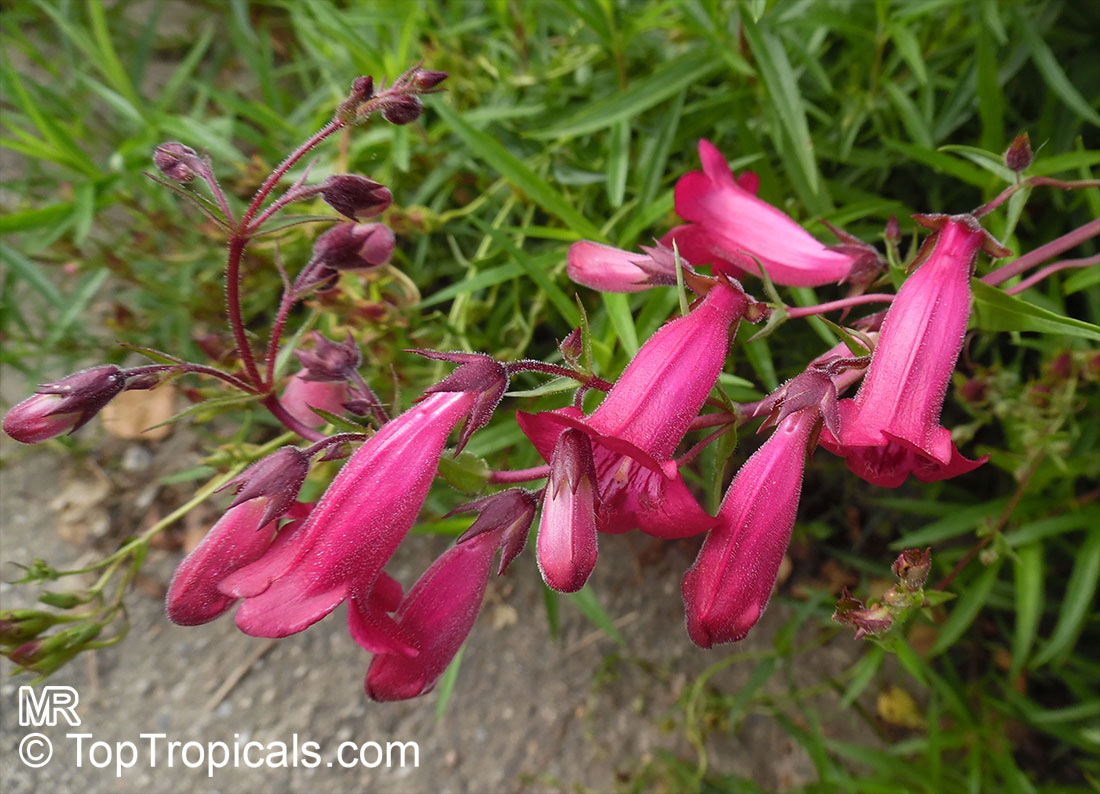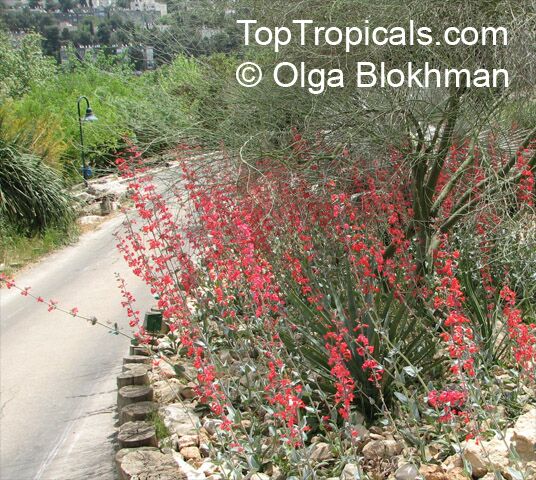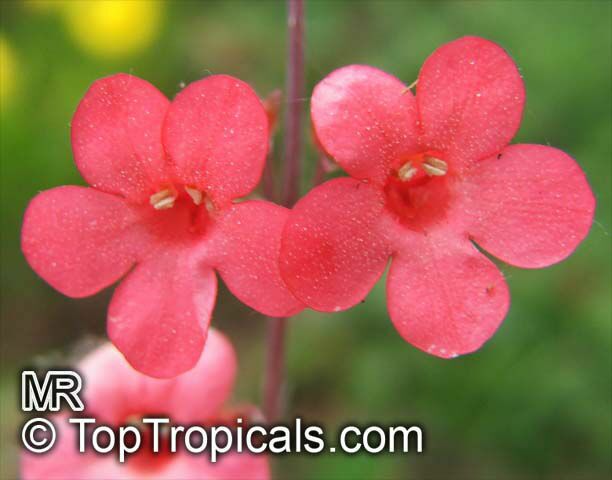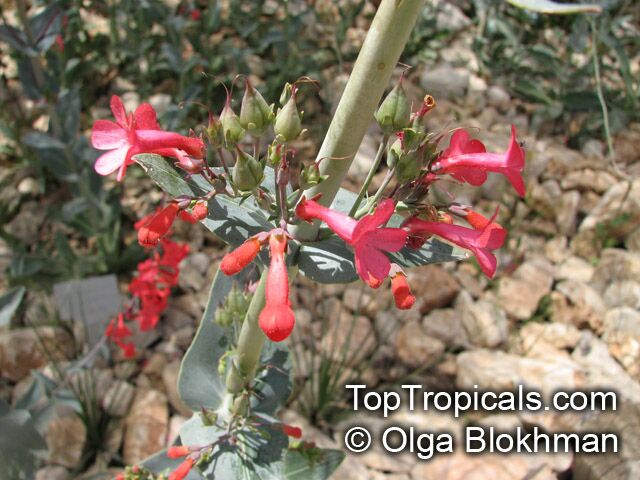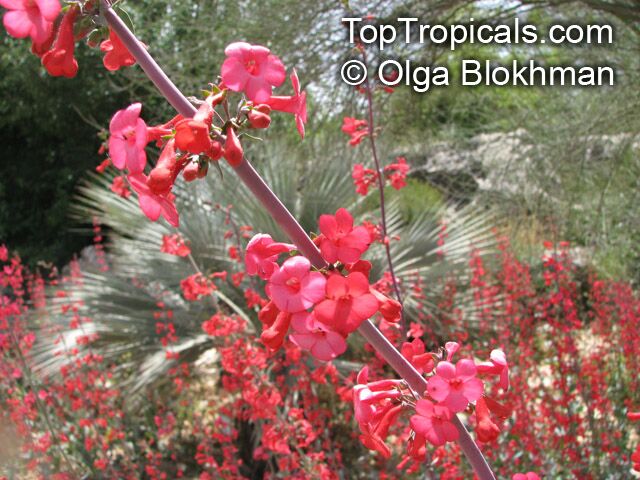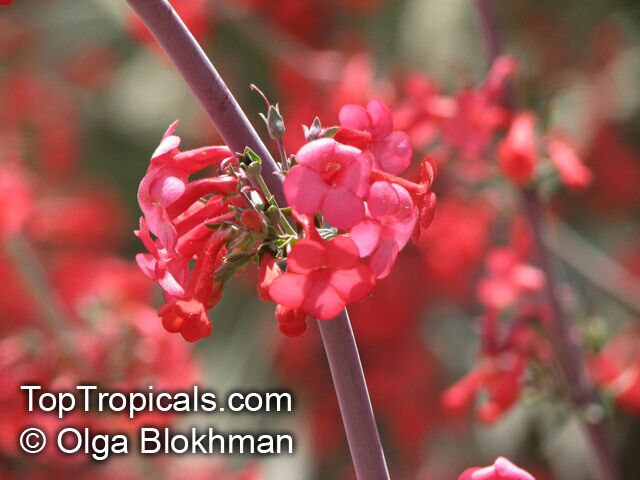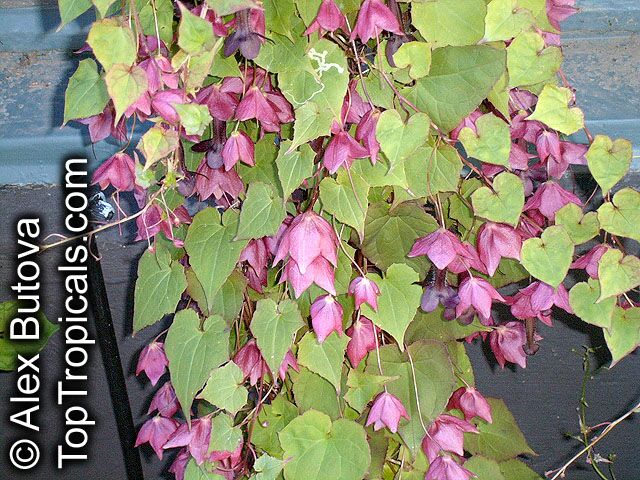Botanical family: Plantaginaceae
| Number of plants found: 14 | Next | 
|
Go to page: | 1 | 2 |
Achetaria azurea, Otacanthus caeruleus
Brazilian Snapdragon, Amazon BlueFamily: Plantaginaceae
Origin: Brazil






Free branching spreading small shrub with bluish mauve flowers with white eye. Leaves are very fragrant resembling pine scent. Everbloomer. Prefers acid soil.
Angelonia angustiflolia, Angelonia goyazensis
Angel Mist, Summer Snapdragon, Angel FlowerFamily: Plantaginaceae
Origin: Brazil












Angelonia is a relatively new species to the world commercial market. Every part of plant has fragrance. When you water them the smell comes stronger. It likes bright sun and water a lot. Grow faster at the cool place. Blooms all year round.
Digitalis purpurea
Purple Foxglove, Lady's GloveFamily: Plantaginaceae













It is a herbaceous biennial plant. Also freely self-seeds under favorable growing conditions, and, as with biennial hollyhocks, can establish colonies in the garden that will persist for years as if they were perennials.
The flowering stem develops in the second year, typically 1 to 2 m tall, sometimes larger. The flowers are arranged in a showy, terminal, elongated cluster, each tubular, pendent, purple (also pink, rose, yellow, or white in selected cultivars).
All parts of the plants, especially the leaves, are poisonous.
Hebe sp.
VeronicaFamily: Plantaginaceae
Origin: New Zealand
USDA Zone: 7-10?










These small shrubs are found in cool climates of the world, especially New Zealand where some of the species are native.Hebe sp. or Veronica is a small shrub typically measuring 2-5 ft. in height. This plant is best suited for full sun or semi-shade and needs regular watering. It is best grown in USDA Zones 7-10.
Hebe sp. boasts pink, white, and off-white flowers that attract butterflies and hummingbirds and provides ornamental foliage. Its flowers may also be lavender, blue and purple.
When growing Hebe sp. in pots in colder regions, it's best to keep the plant in a sheltered spot. Water the plant regularly in both spring and fall while watering more sparingly in the summer and winter. Applying a liquid fertilizer monthly in the warmer months and bi-monthly in the cooler months should provide your Hebe sp. with the nutrients it needs to thrive.
Isoplexis canariensis
Canary Island FoxgloveFamily: Plantaginaceae
Origin: Canary Islands
USDA Zone: 9-11?









Isoplexis canariensis is ideally grown in full sun with moderate water and a well-drained soil. If you are looking to grow Isoplexis canariensis in cold regions, its best to plant it in a pot. Make sure to move it indoors before it gets too cold, Typically it can withstand temperatures at least down to the 30s F for a short time.
Isoplexis canariensis has many features that makes it a great garden addition. Not only does it attract butterflies and hummingbirds with its fragrant yellow and orange flowers, but it is also an ethnomedical plant. It is used in herbalism to support memory and focus.
In addition to being a great ornamental addition, Isoplexis canariensis has a great ability to grow in harsh environments. It is naturally found on the Canary Island where it is highly drought-tolerant and can withstand arid and hot temperatures.
Overall, Isoplexis canariensis is a great choice for any garden. It grows best in full sun but will tolerate semi-shade and moderate water. If you are looking to grow it in a cold region, it is best to keep it in a pot and move indoors before it gets too cold. It is a beautiful addition to any garden that will attract butterflies, hummingbirds and provide medicinal properties as well.
Penstemon digitalis
Foxglove PenstemonFamily: Plantaginaceae
Origin: Eastern and Southeastern United States








Basal leaves are elliptic and stem leaves are lance-shaped to oblong. Features white, two-lipped, tubular flowers (to 1.25" long) borne in panicles atop erect, rigid stems.
Penstemon pinifolius
Pineleaf PenstemonFamily: Plantaginaceae
Origin: New Mexico
USDA Zone: 4-10?









Native to New Mexico, Penstemon pinifolius (Pineleaf Penstemon) is a small evergreen shrub that grows between 2-5 feet tall. It features leathery, prickly-toothed, deep green needles that resemble pine needles, adding a unique texture and color to landscapes. This hardy, long-blooming little shrub has a breathtaking display of vinous-red or crimson flowers in late spring to summer. The flowers are very attractive to butterflies, hummingbirds and bees, providing a beautiful and vibrant focal point in any garden.
The Pineleaf Penstemon grows best in full to semi-shade and does well in areas with moderate water. It is a low-maintenance, easy-care plant and can tolerate cold climates, down to USDA Growing Zone 4-10. In colder regions, it is recommended to grow it in well-drained pots, where it can be taken indoors during the winter and stored in bright, cool locations until temperatures warm up enough to bring them back outdoors.
This versatile plant is an excellent choice for adding bold color and texture to any garden, and is sure to bring a dramatic effect with its bright red and yellow flowers and needle-like foliage. Its hardiness, coupled with its low maintenance requirements, makes this a great choice for beginner gardeners. The Pineleaf Penstemon is a great choice for those looking to add some beauty and color to cooler climates.
Penstemon sp.
Beard-tongueFamily: Plantaginaceae
Origin: North America












Most penstemons are herbaceous perennials, the remainder being shrubs or subshrubs.
Species and varieties:
Penstemon eatonii
Penstemon hartwegii
Penstemon hartwegii 'Tubular Bells Rose'
Penstemon hybride 'Cherry'
Penstemon kunthii
Penstemon 'Lord Home'
Penstemon superbus, Penstemon puniceus
Superb BeardtongueFamily: Plantaginaceae
Origin: Arizona, New Mexico, North Mexico
USDA Zone: 5-10?








Penstemon superbus, or Superb Beardtongue, is a small shrub native to Arizona, New Mexico, and North Mexico. Growing to a height of 2-5 feet, Superb Beardtongue is an eye-catching addition to any garden. To thrive, this plant needs full sun and moderate water, but it is also very drought tolerant and can handle dry conditions.
The blooms of Superb Beardtongue are a striking combination of pink, red, and crimson vinous flowers. Though beautiful, these flowers are also incredibly useful, as they attract a variety of pollinators, including butterflies and hummingbirds.
Grown in USDA Zones 5-10, Superb Beardtongue is an excellent choice for gardeners looking to add a touch of color to their outdoor area. For those living in colder regions who might be concerned about growing this plant in a pot, it is possible with some extra care. Be sure to use a pot with ample drainage holes and water the potting soil only when it is dry several inches down. Additionally, choose a potting soil that is lightweight and well aerated, and be sure to use a fertilizer, as Superb Beardtongue responds well to this extra boost.
With its easy care and stunning colors, Penstemon superbus is a must-have for any garden - especially those looking to attract butterflies and hummingbirds. Though this plant may require a bit of extra care for those living in colder regions, it is worth the effort for the long-lasting display of vibrant colors.
Rhodochiton atrosanguineum
Purple Bell VineFamily: Plantaginaceae
Origin: Southwest Mexico






This vine is native to the mountain and coastal regions of Southwest Mexico and is also known as Purple Bell Vine. This, evergreen, low maintenance vine thrives in full sun to semi-shade and needs moderate amounts of water to thrive. This makes them a great choice for container gardening. They can be trained to climb up walls, trellises and other structures for a unique addition to any garden.
The Rhodochiton atrosanguineum has slow to medium growth, and its leaves and stems are covered in a velvety texture. Its leaves are often purple in color and its flowers are bell or funnel shaped and have an unusual black exterior with a bright purplish-pink interior, which gives it its common name "Purple Bell Vine". Other cultivars which are commonly grown, include the bright pink "Fuchsia" and the dark red "Maroon".
In warm climates, Rhodochiton atrosanguineum will bloom for most of the year but can be kept in bloom if kept in a cool, semi-shaded spot. In colder regions it can be grown as a perennial in a container and brought indoors during the coldest months. For best results, it should be grown in a light, well-draining potting mix and watered regularly but not left in soggy soil. Pruning should also be done to encourage growth and control size.
If grown in cooler areas, Rhodochiton atrosanguineum can survive the winter in pots or containers; although this should be done with care and caution. The pot should be moved out of freezing temperatures to prevent the roots from freezing and the foliage should be covered in a blanket to protect it from cold winds. The soil should not be allowed to completely dry out, but water should be reduced in winter. The Purple Bell Vine should be brought back inside when night temperatures drop below 35-40F. With appropriate care and conditions, it makes a dramatic and elegant addition to any home garden.
| Next |  |
Use link to repeat this search:
https://toptropicals.com/cgi-bin/garden_catalog/cat.cgi?search_op=and&keyword_op=and&language=e&family=Plantaginaceae
&number=10&no_change_lang=1&user=tt&sale=1&first=0
